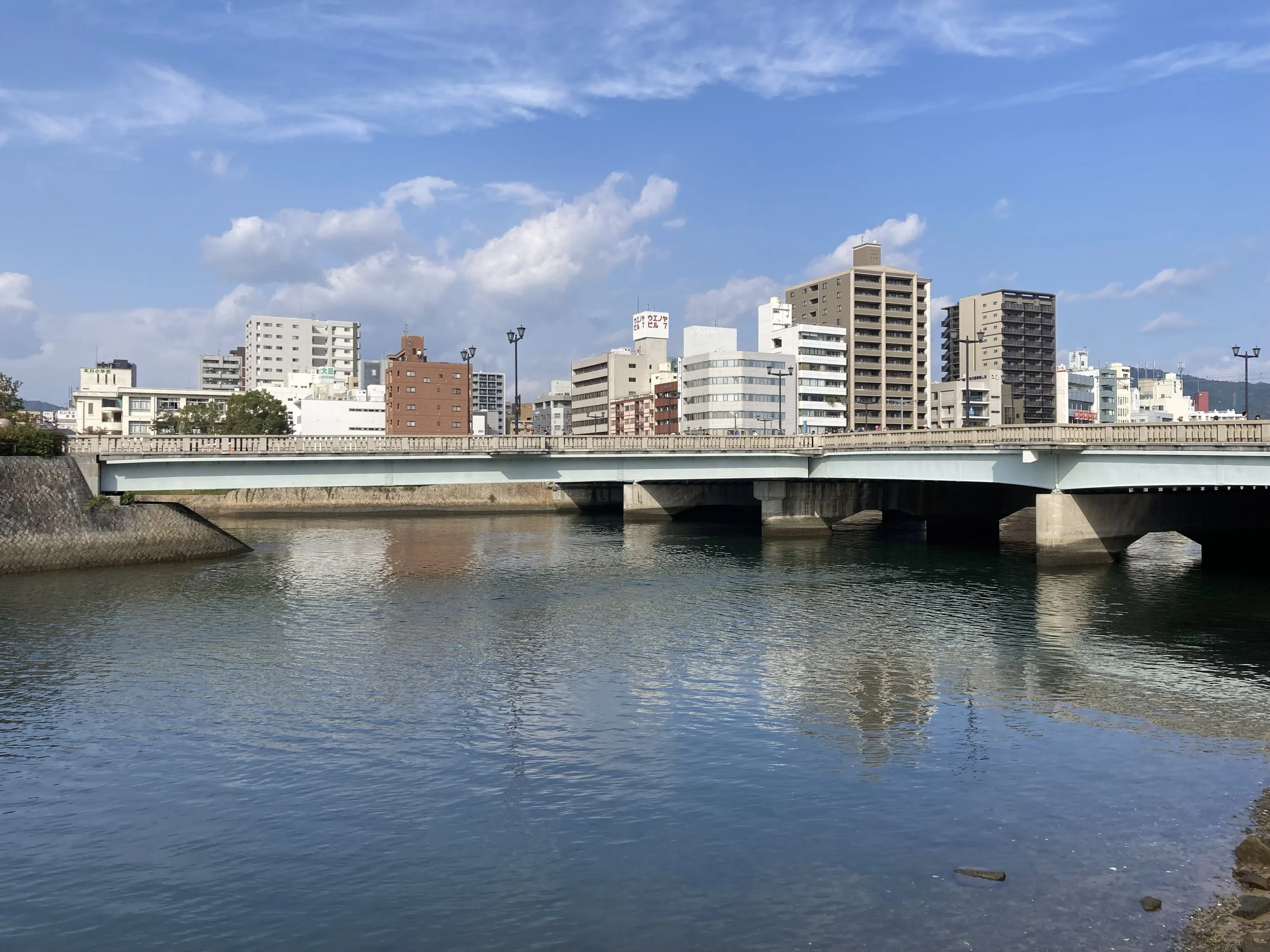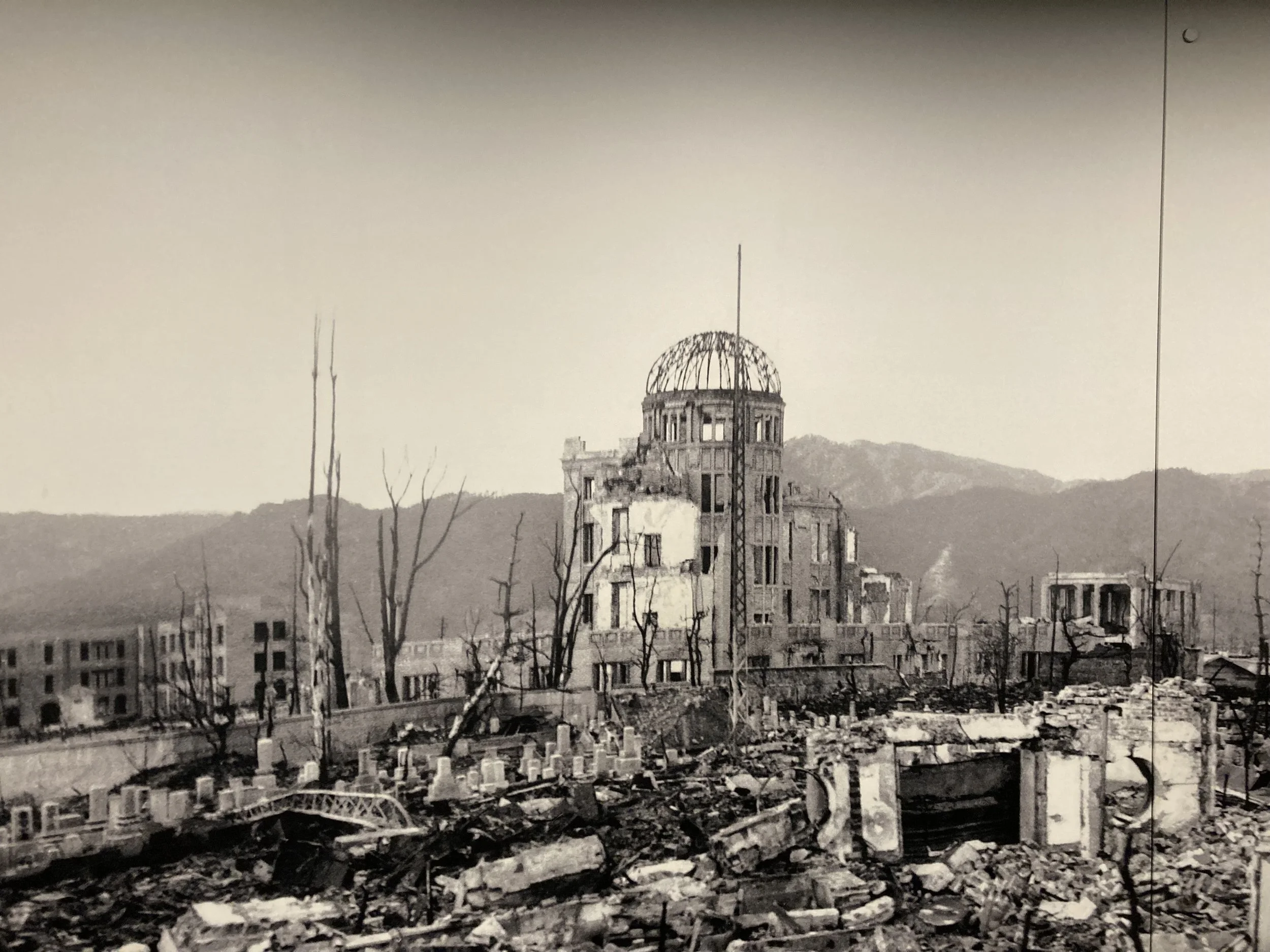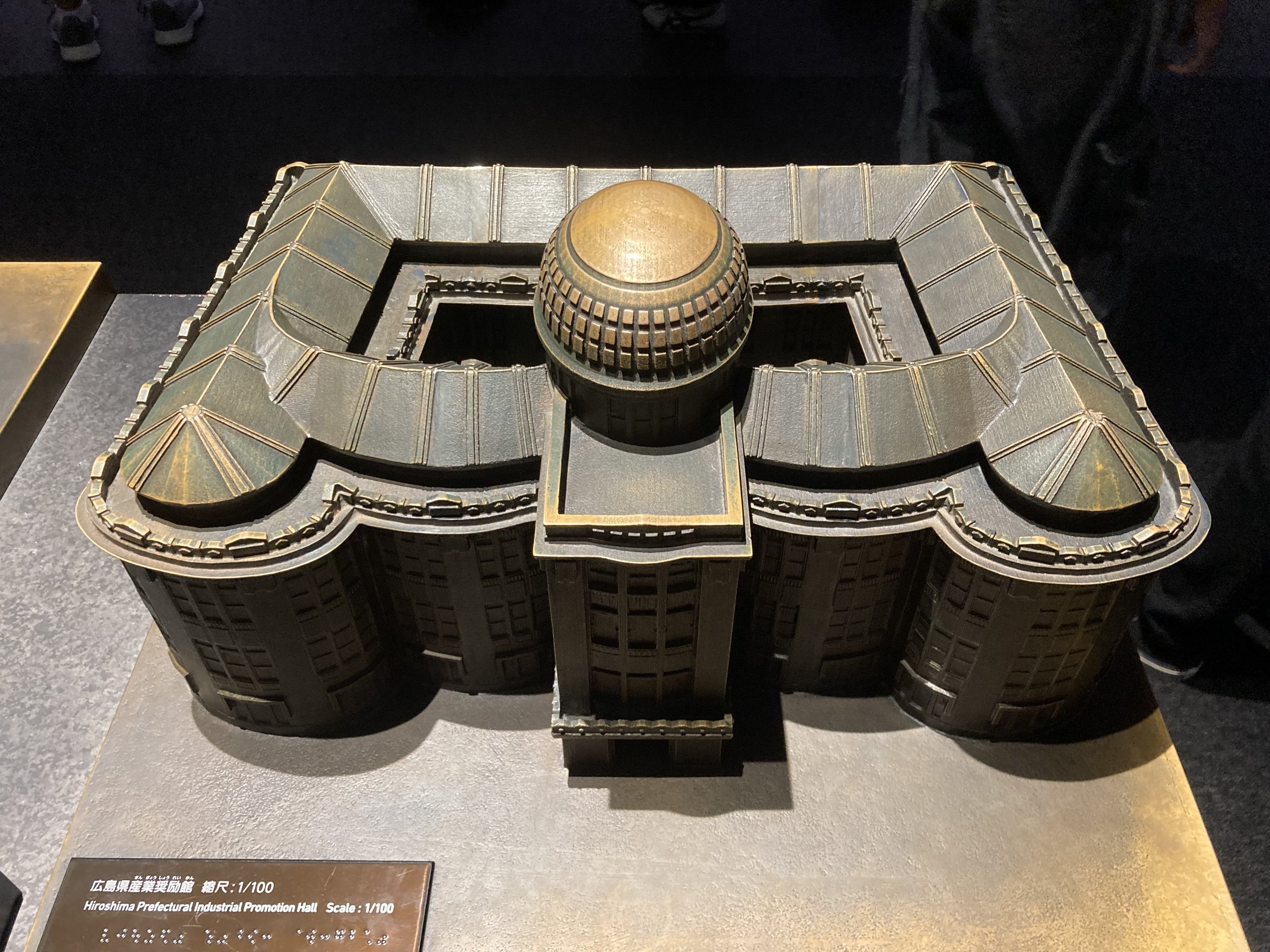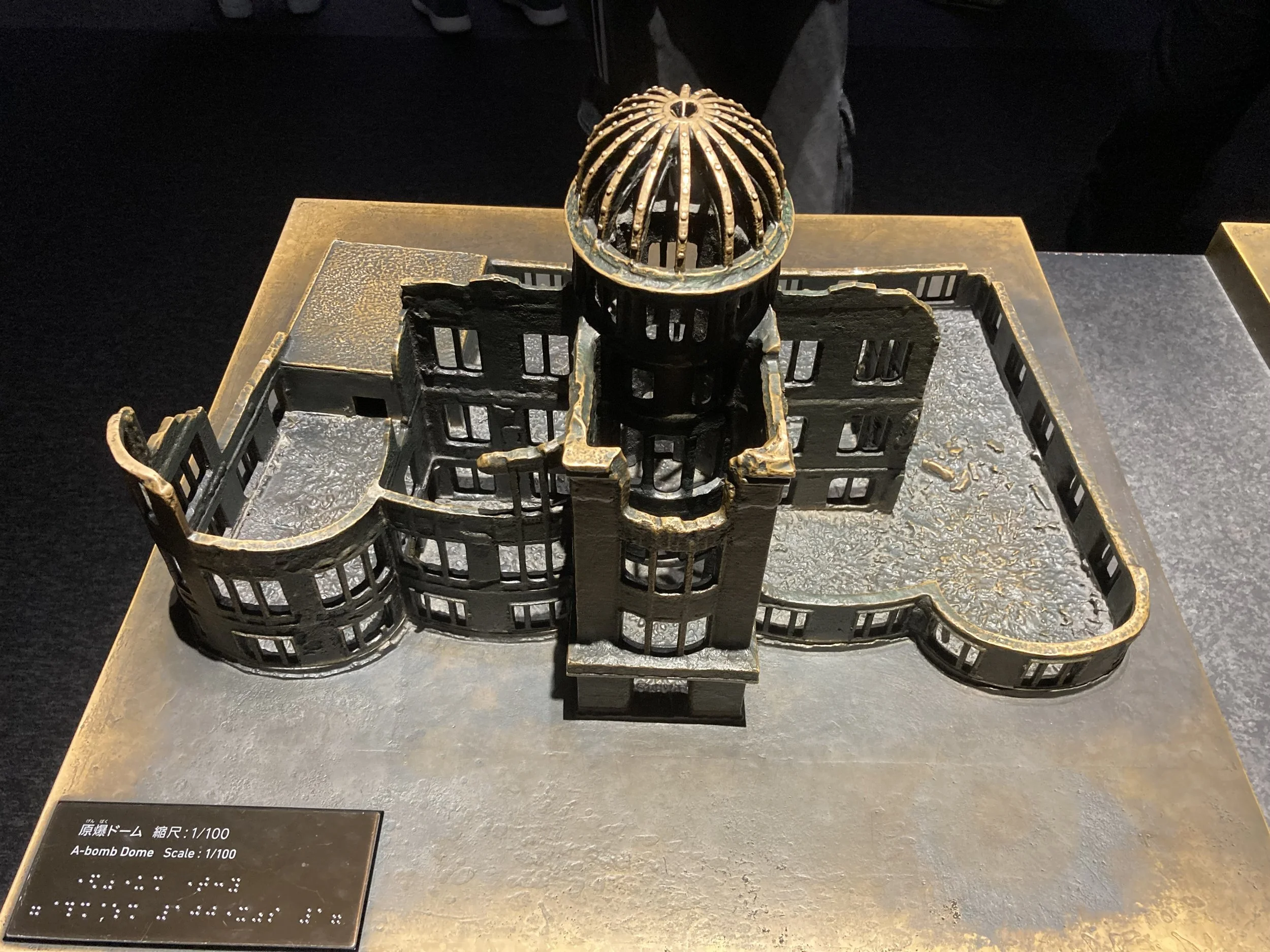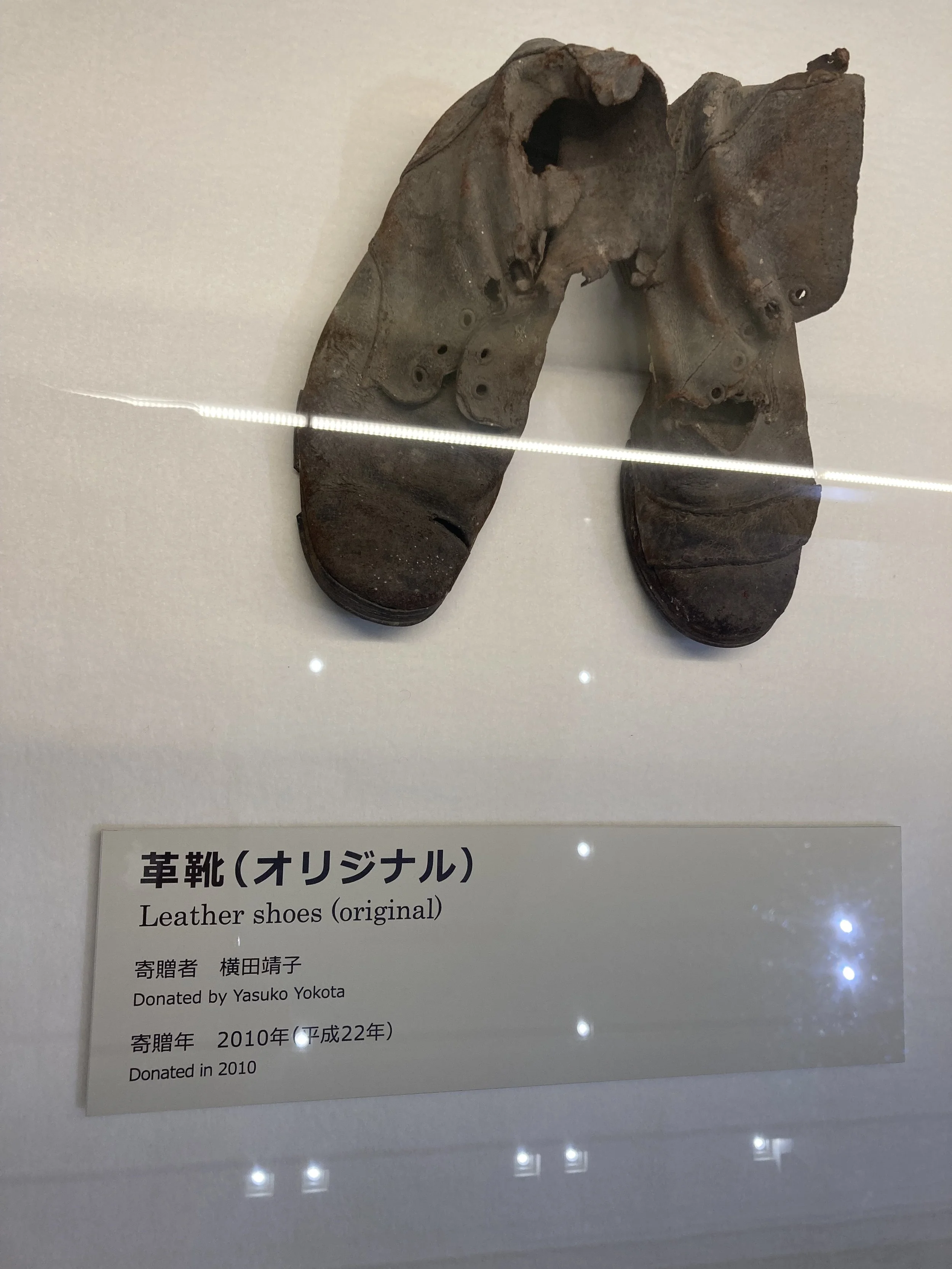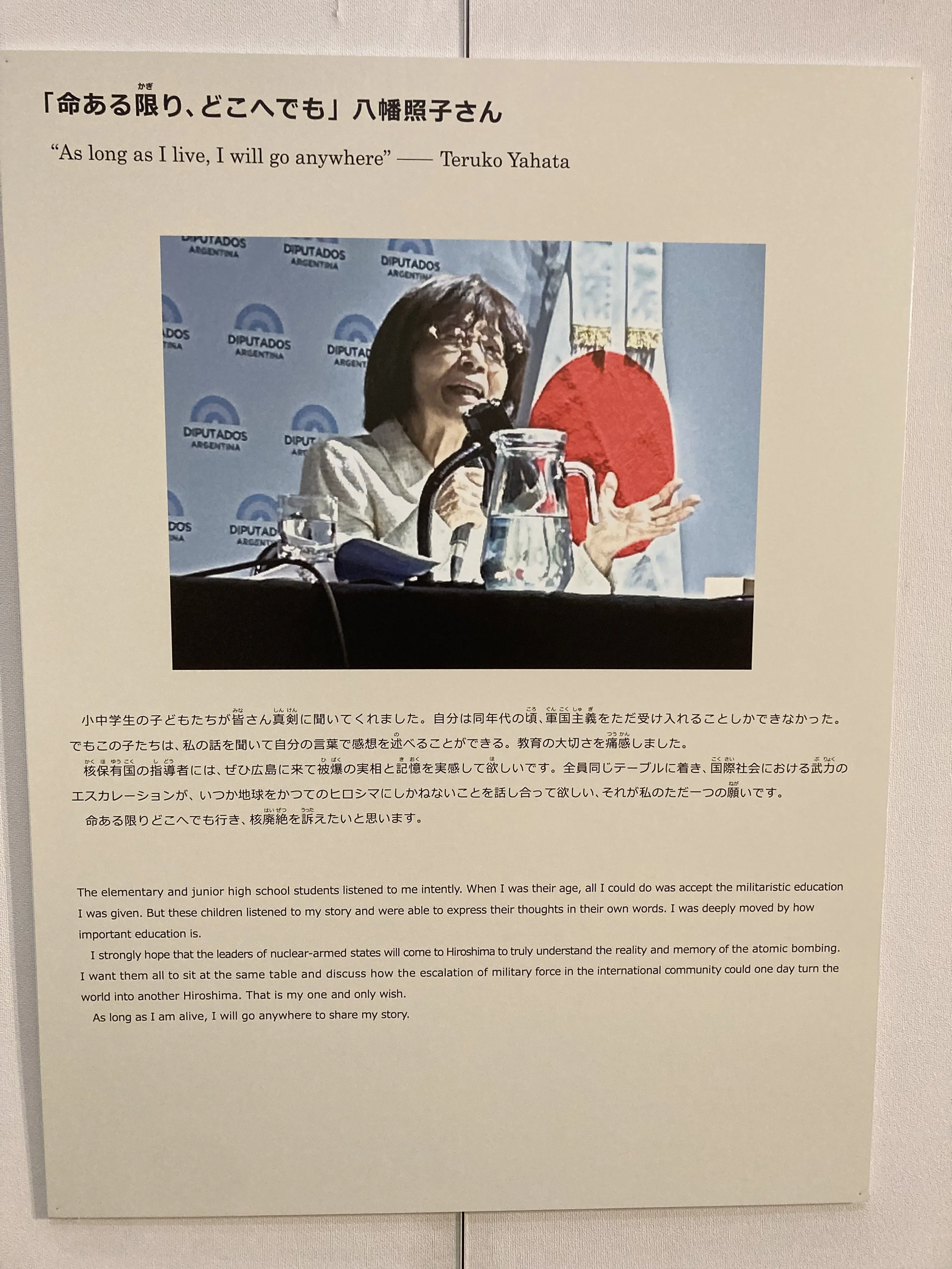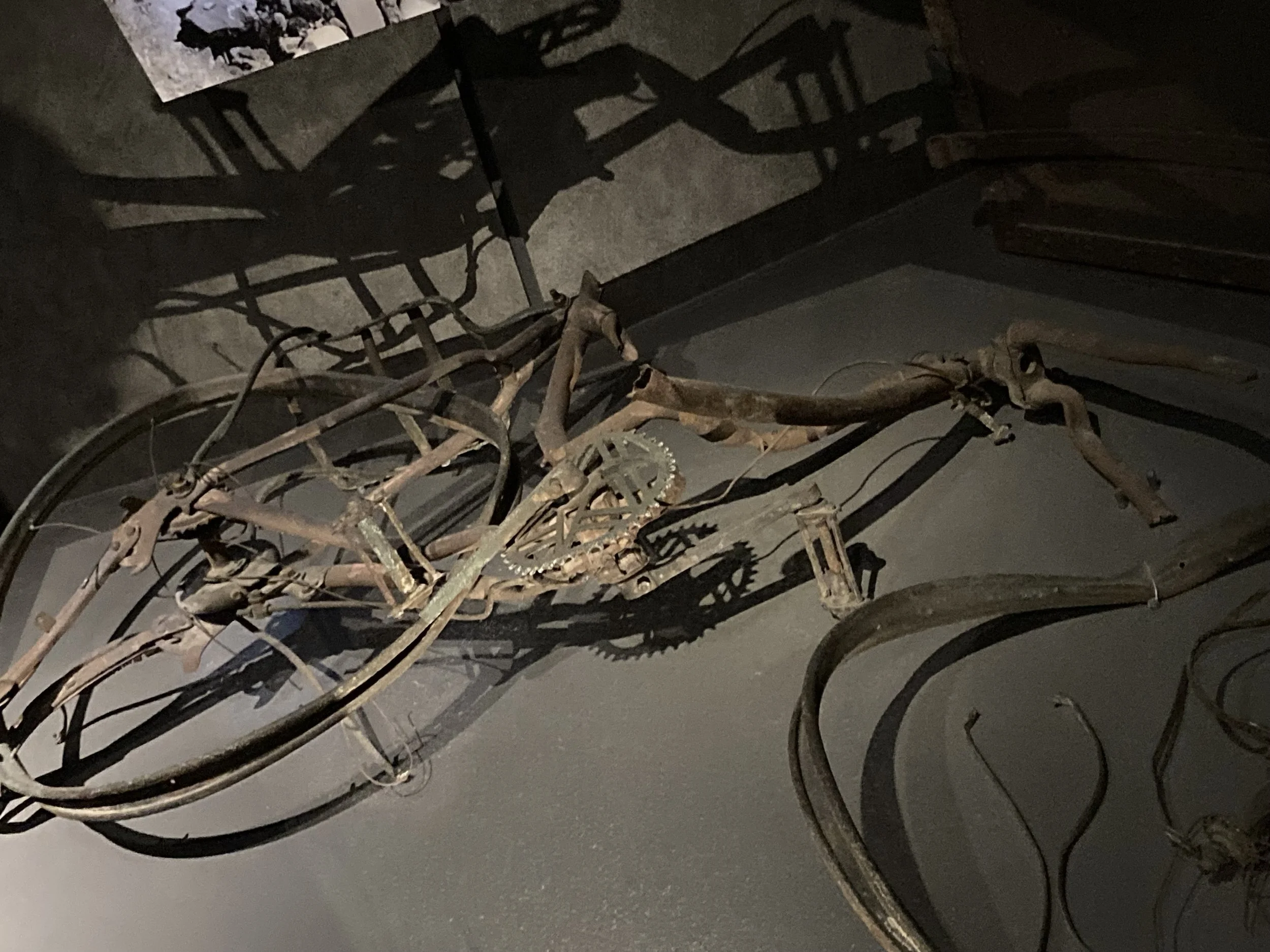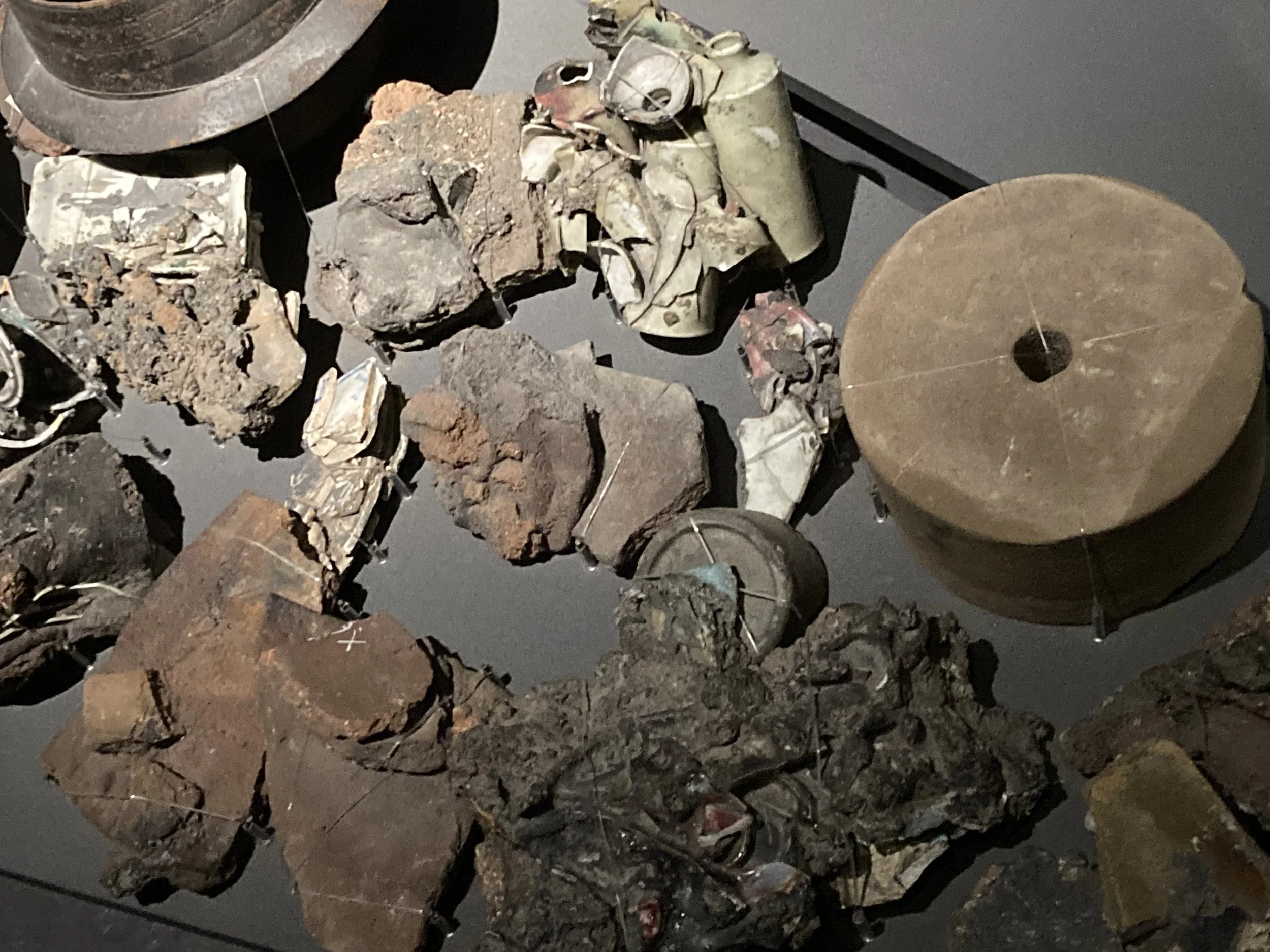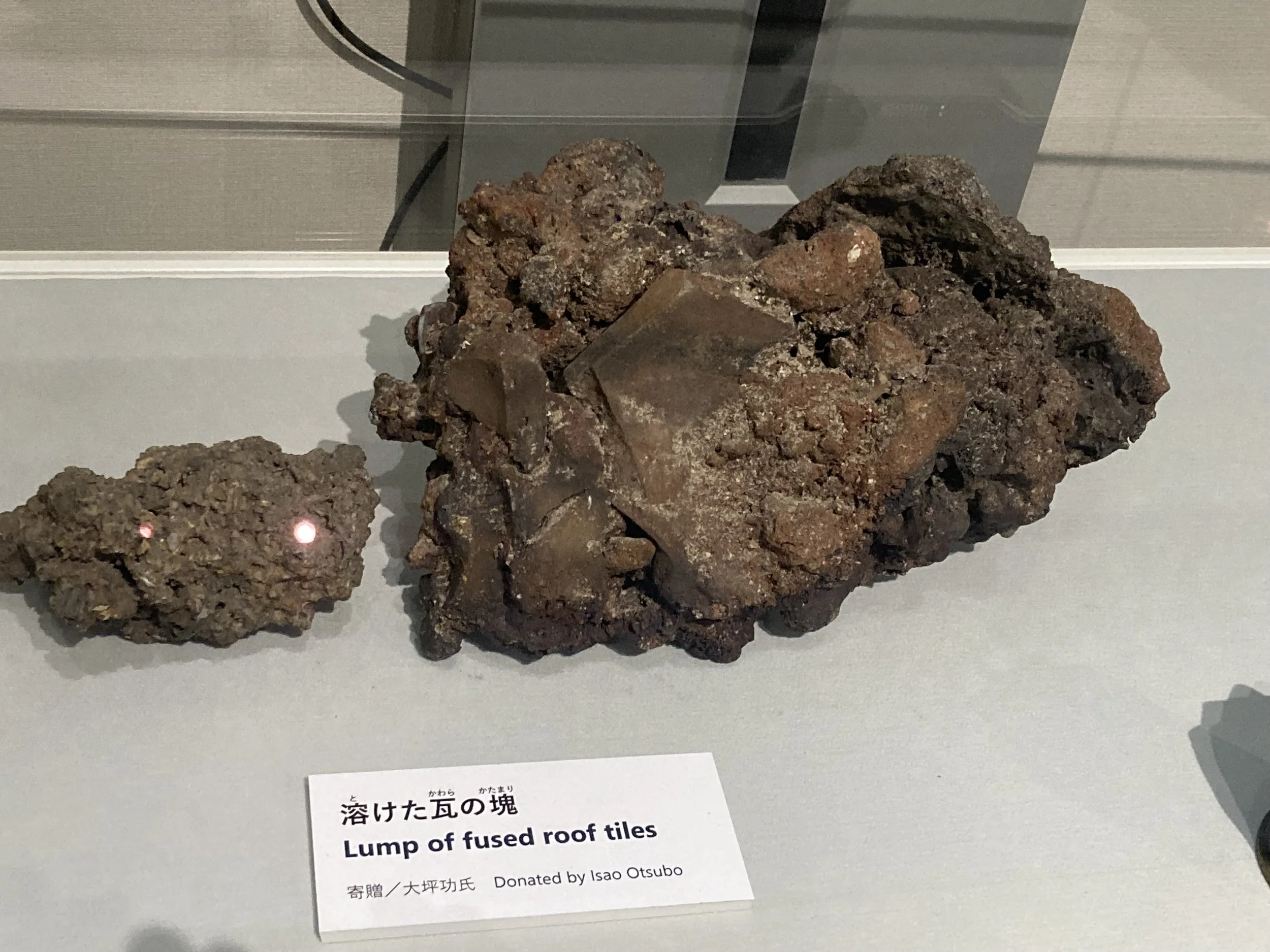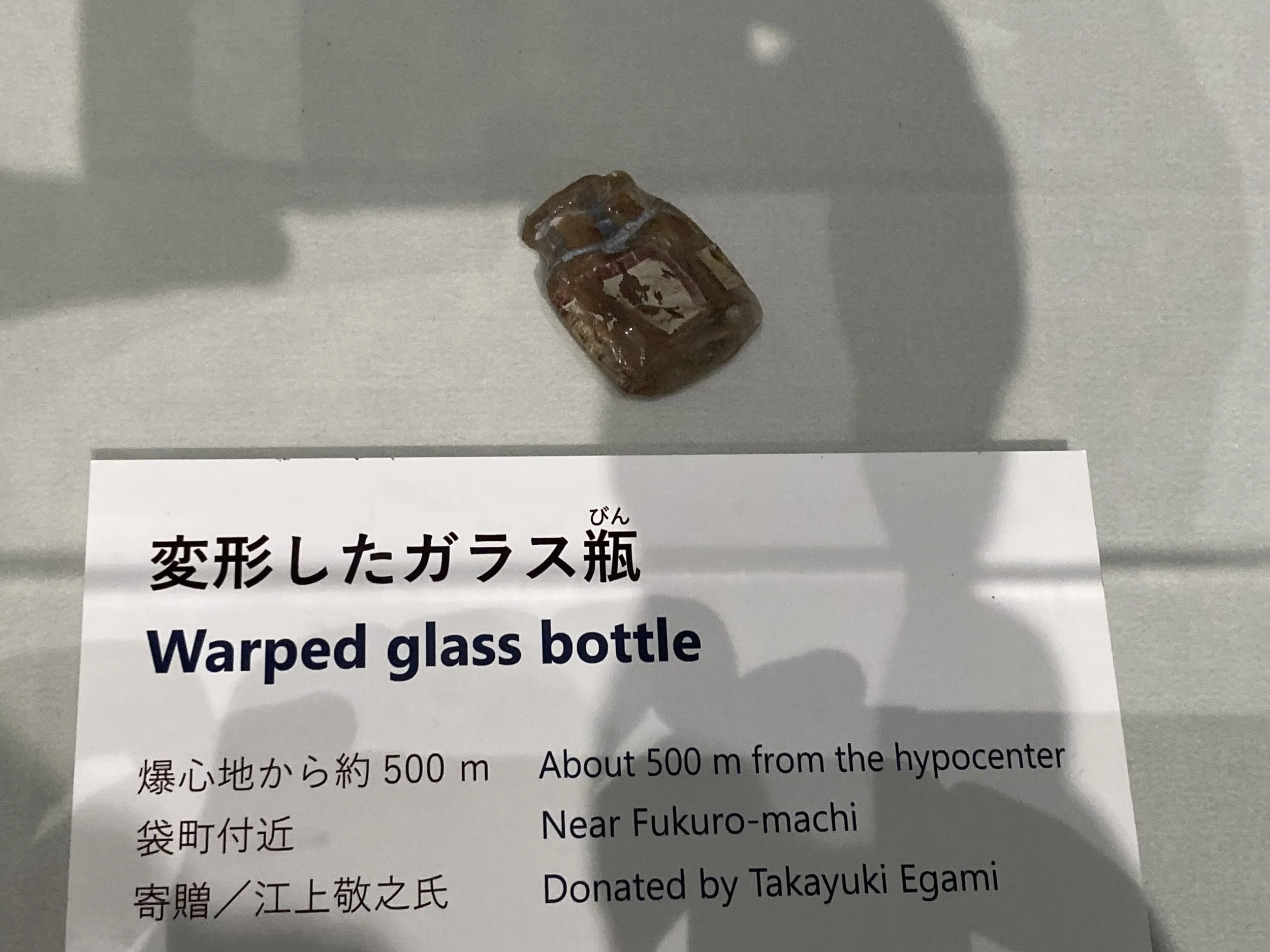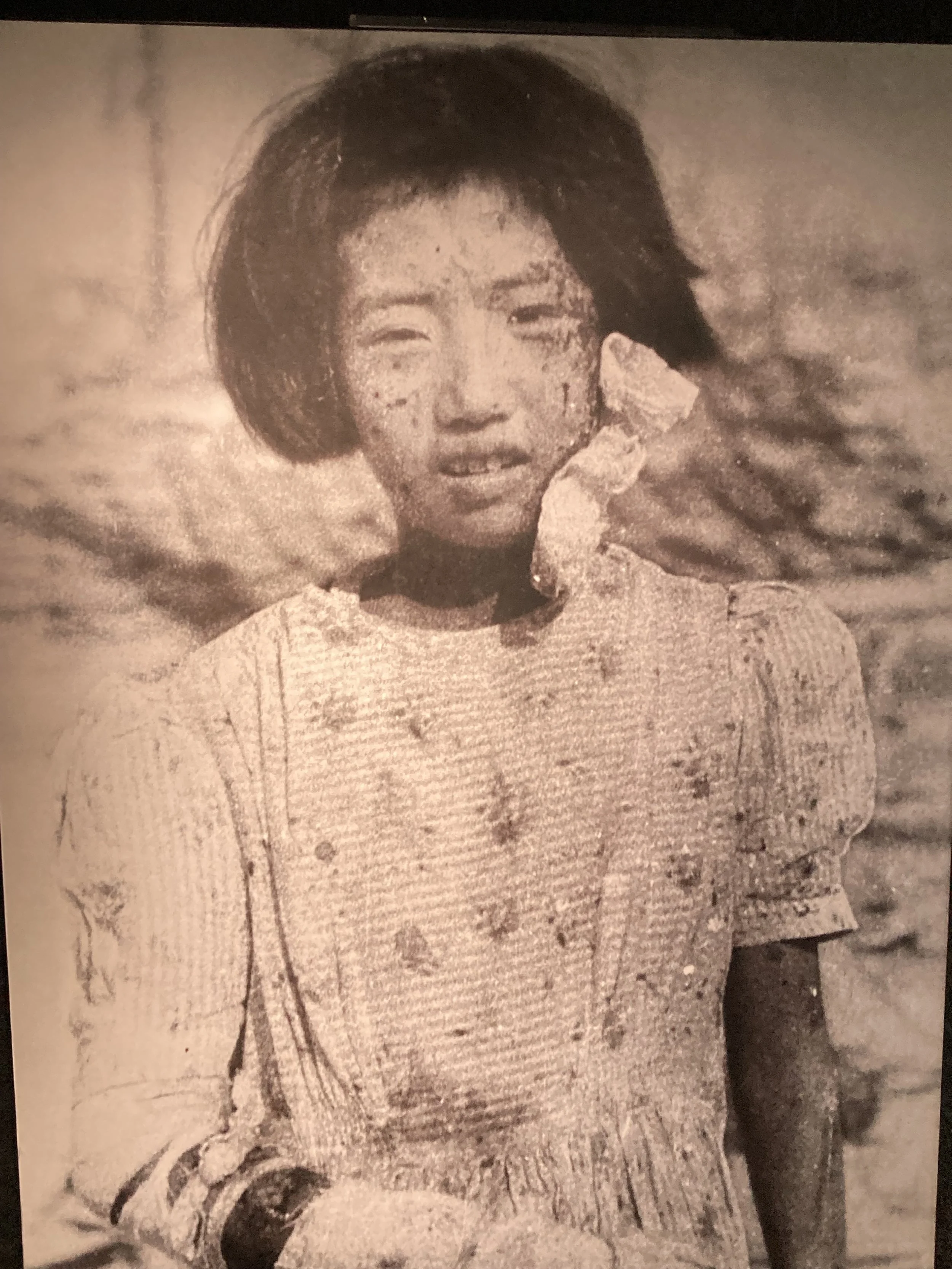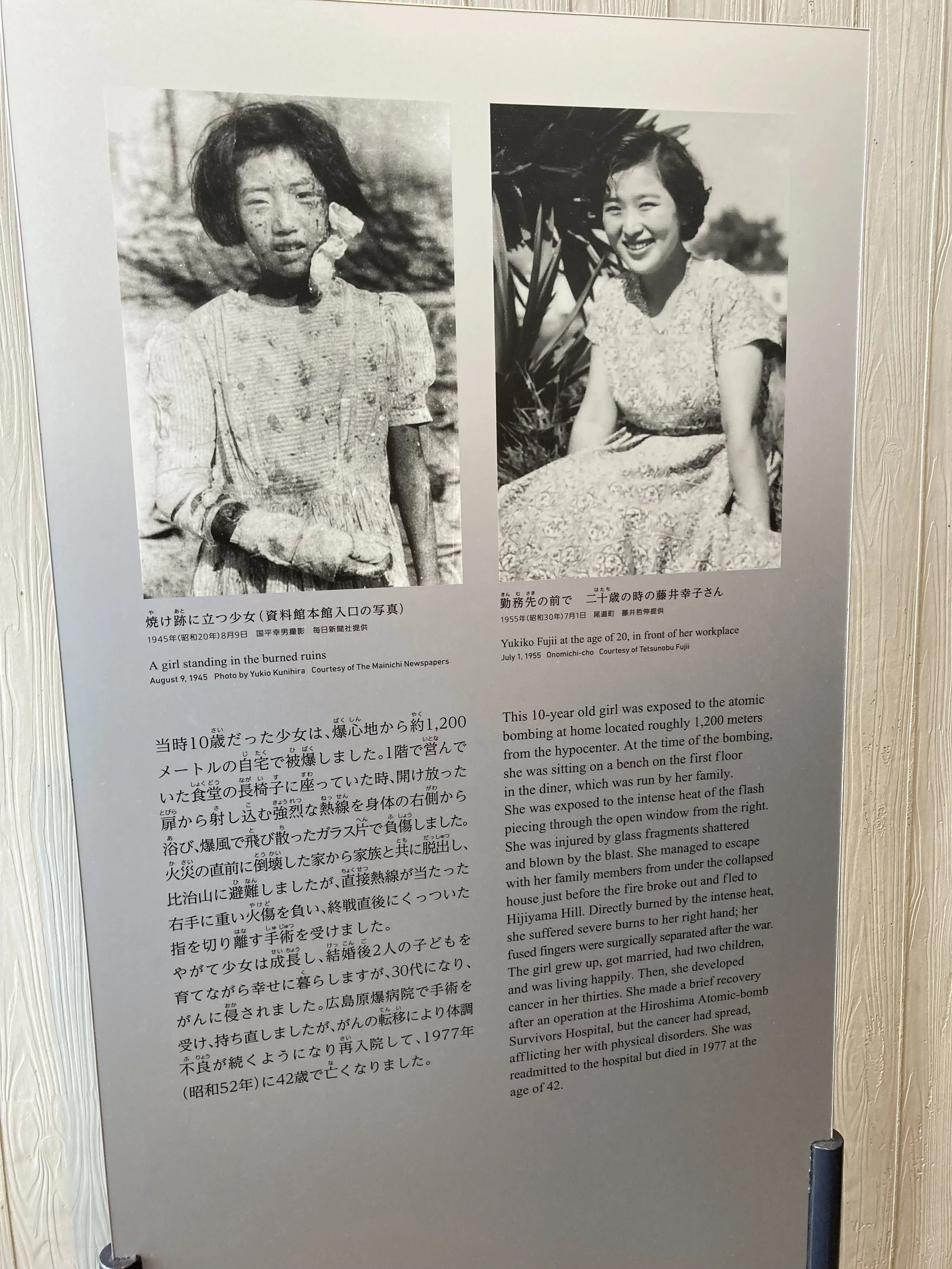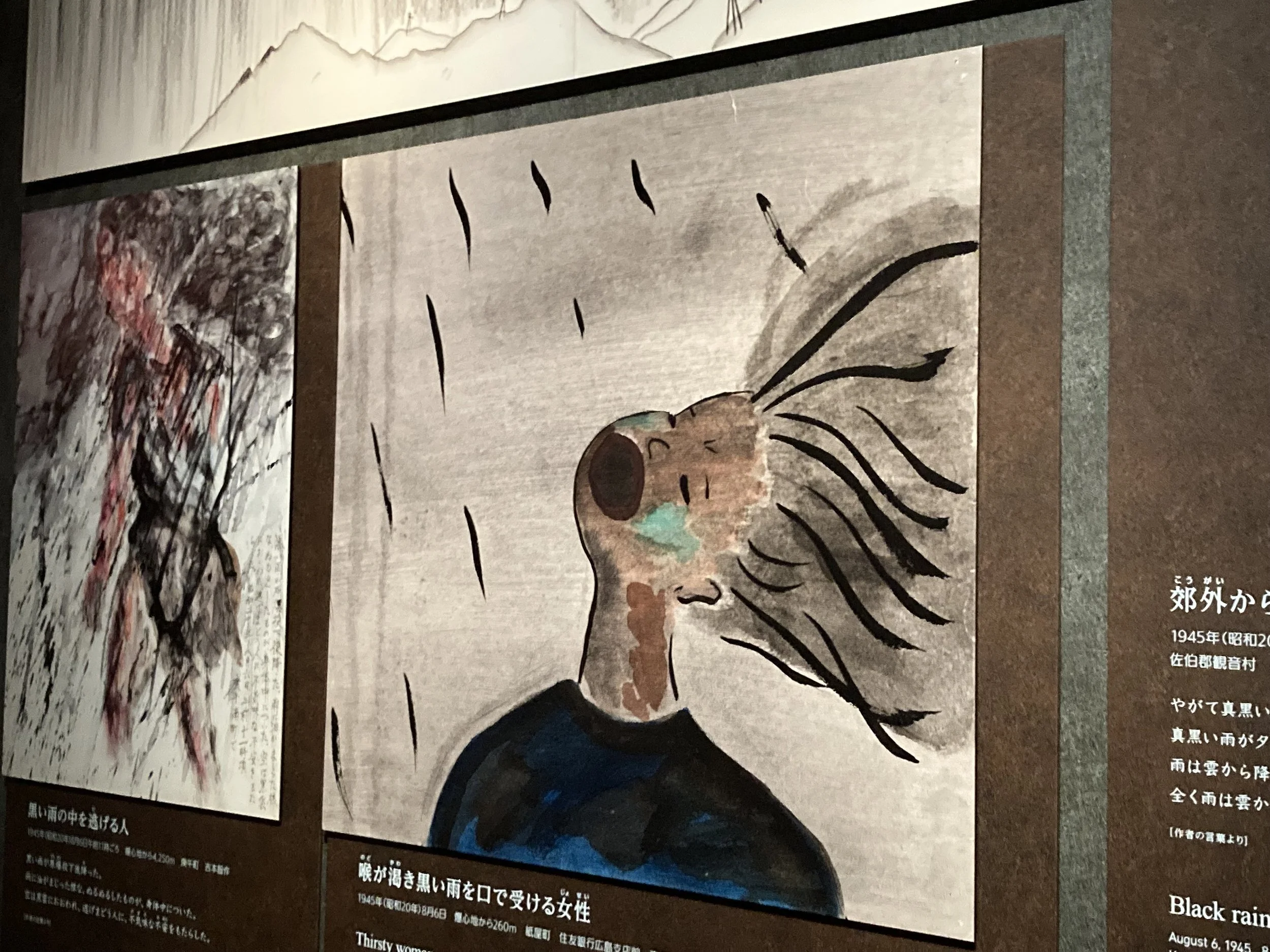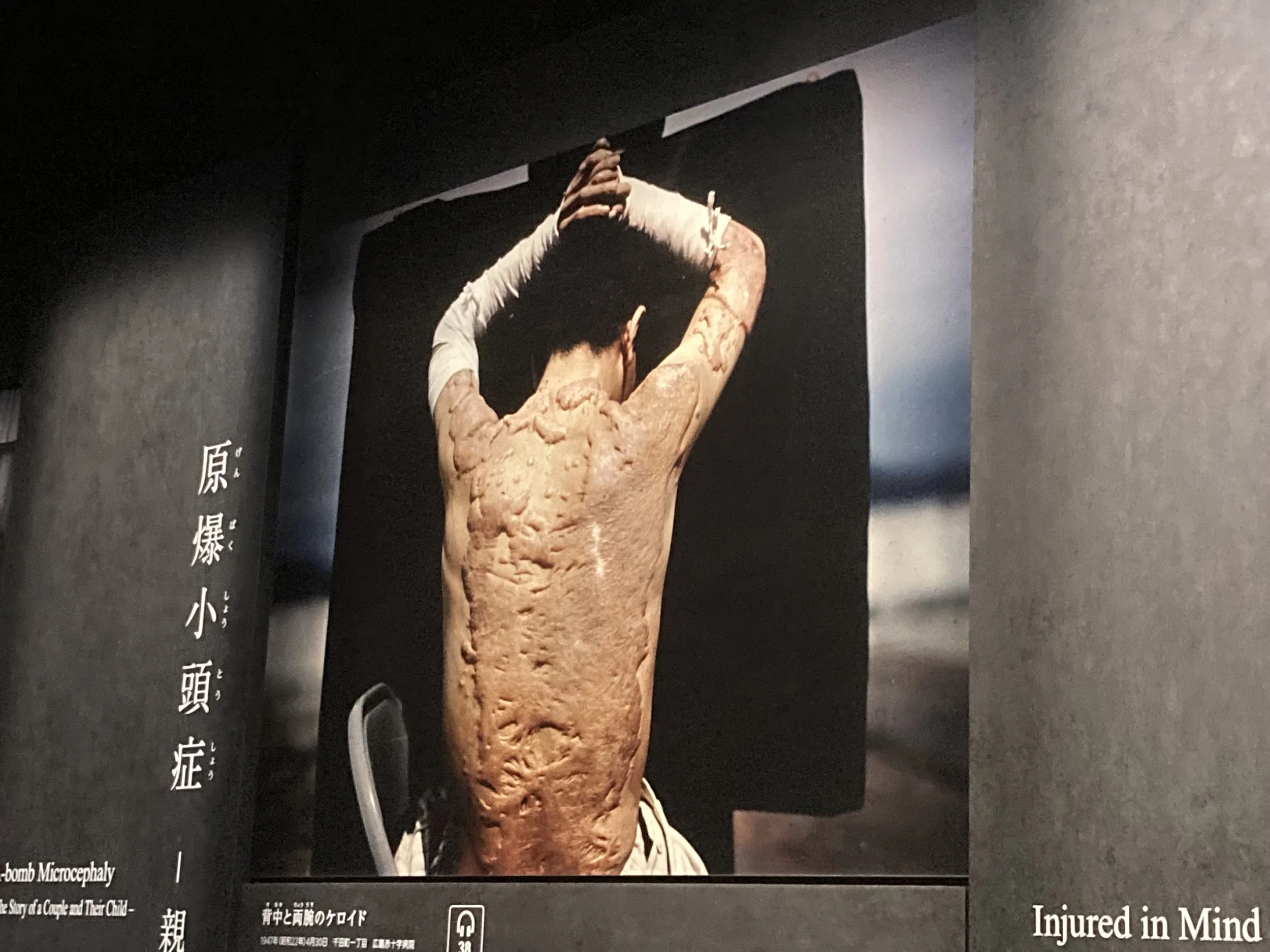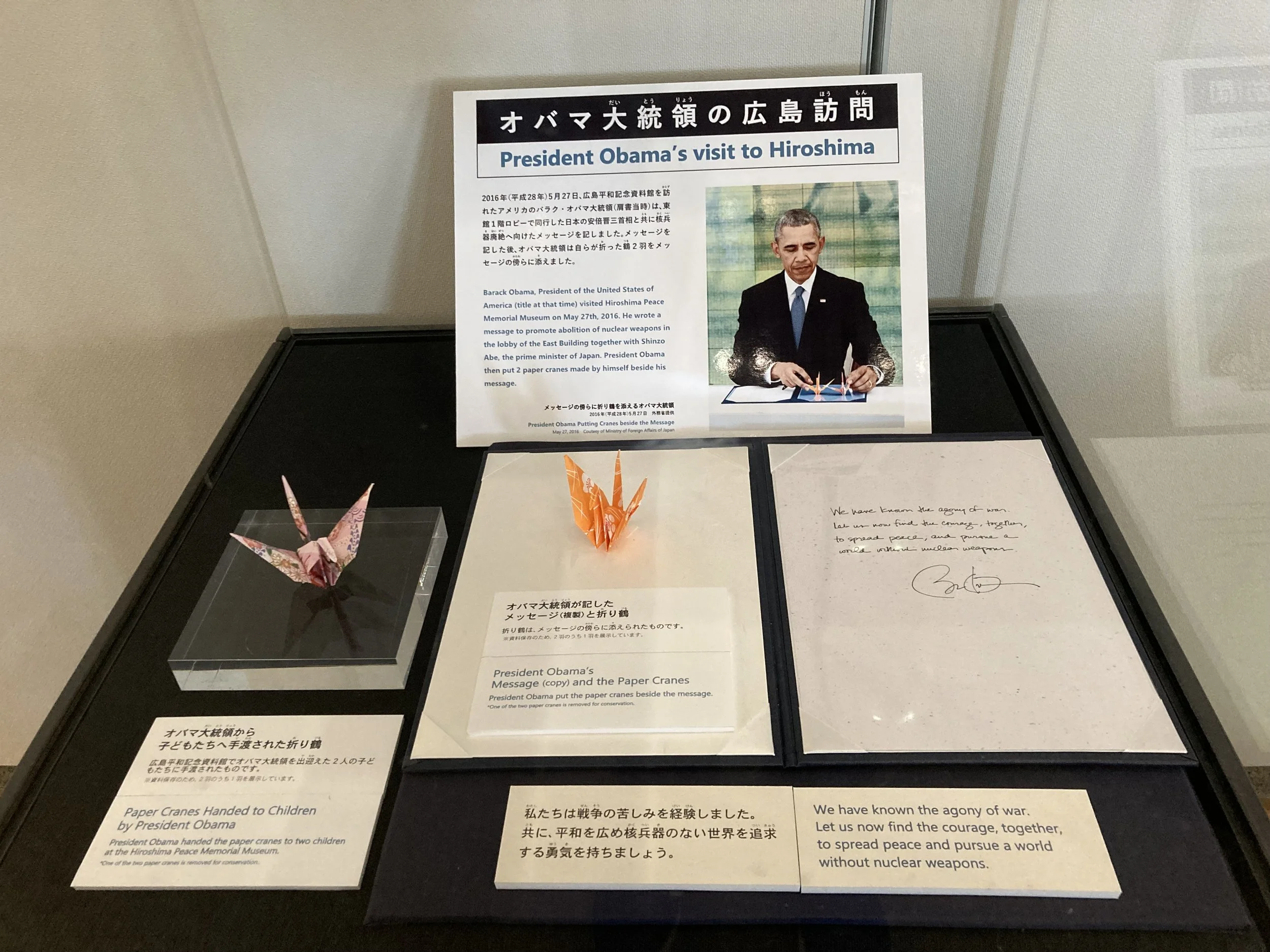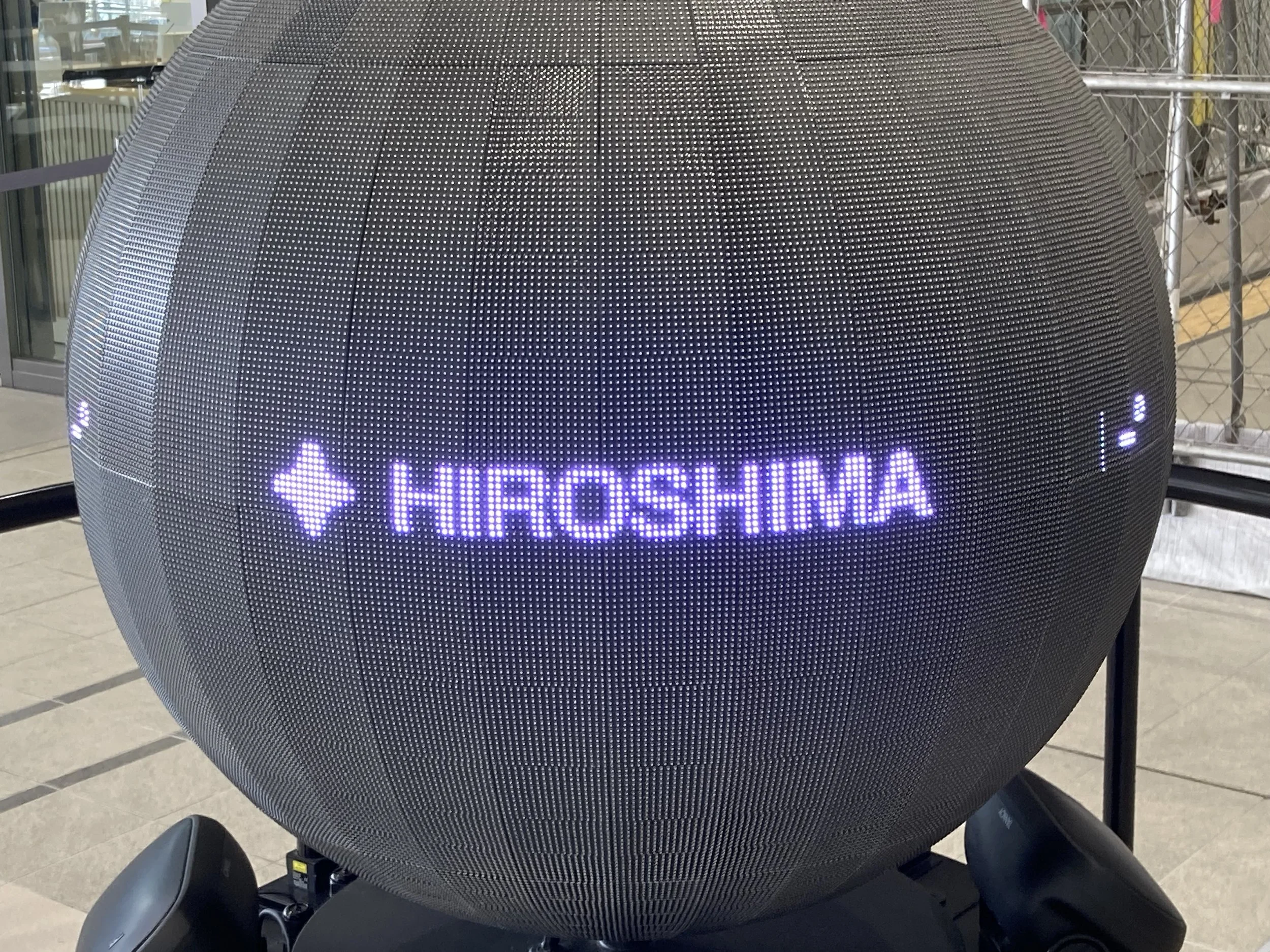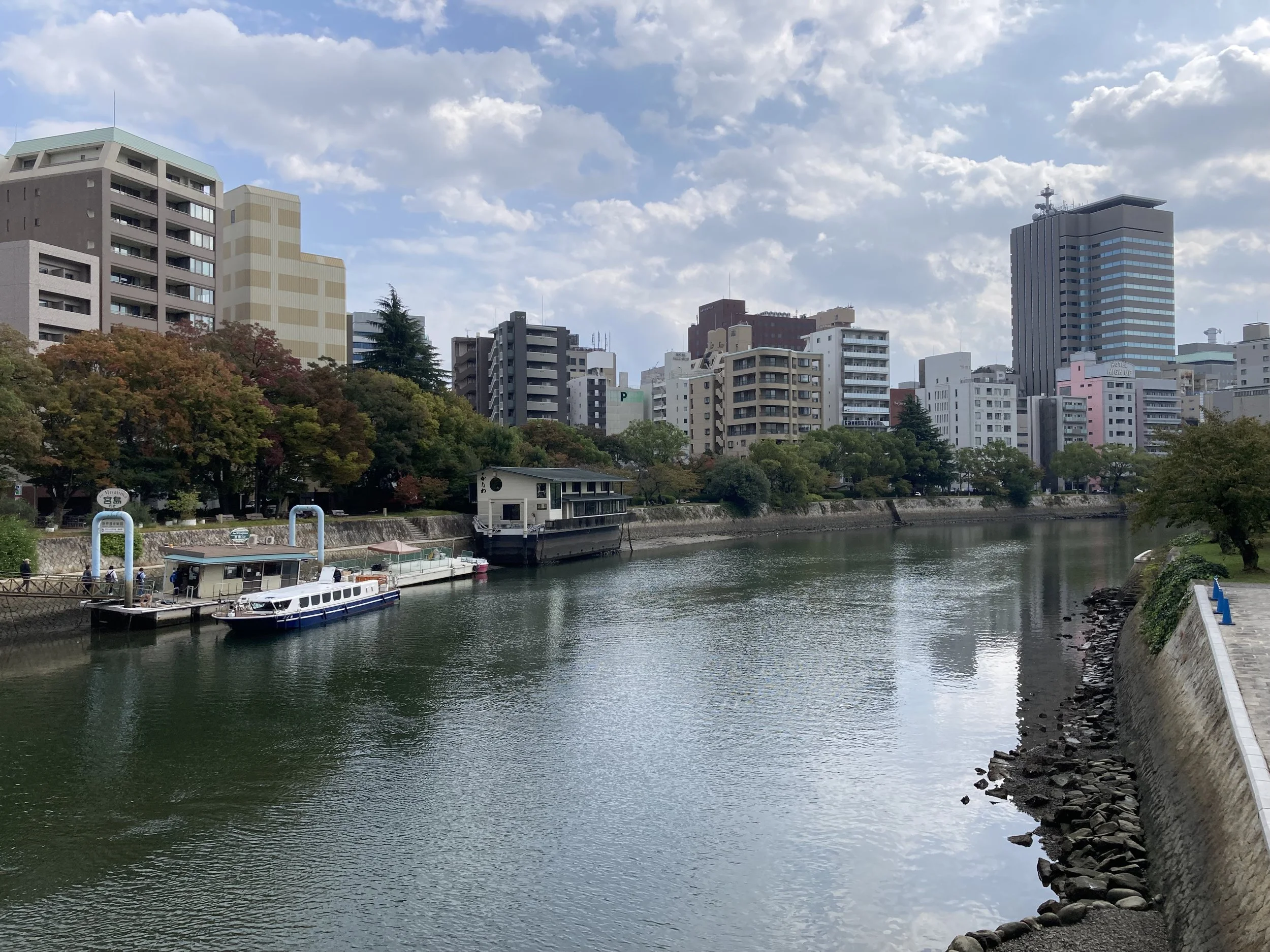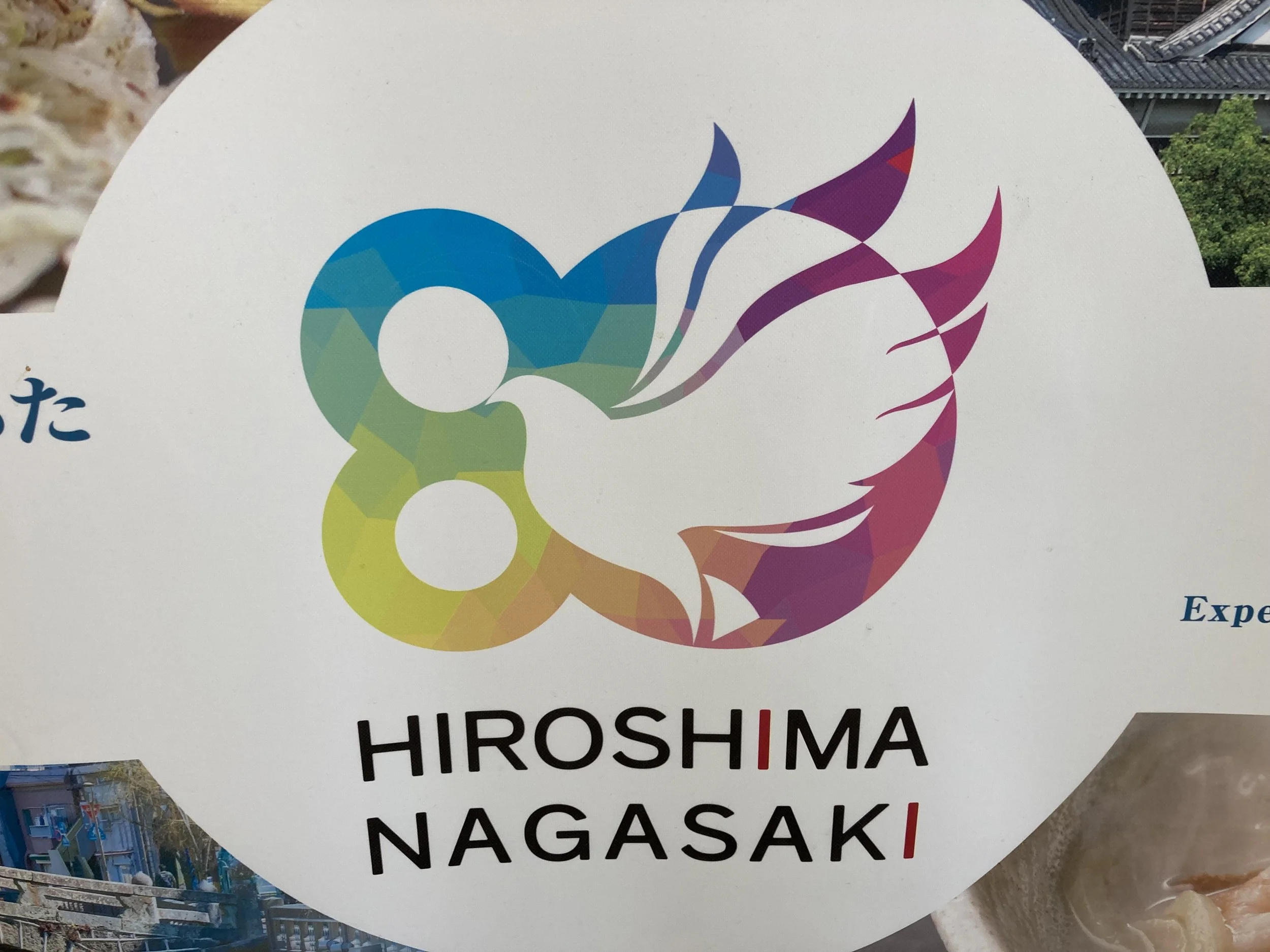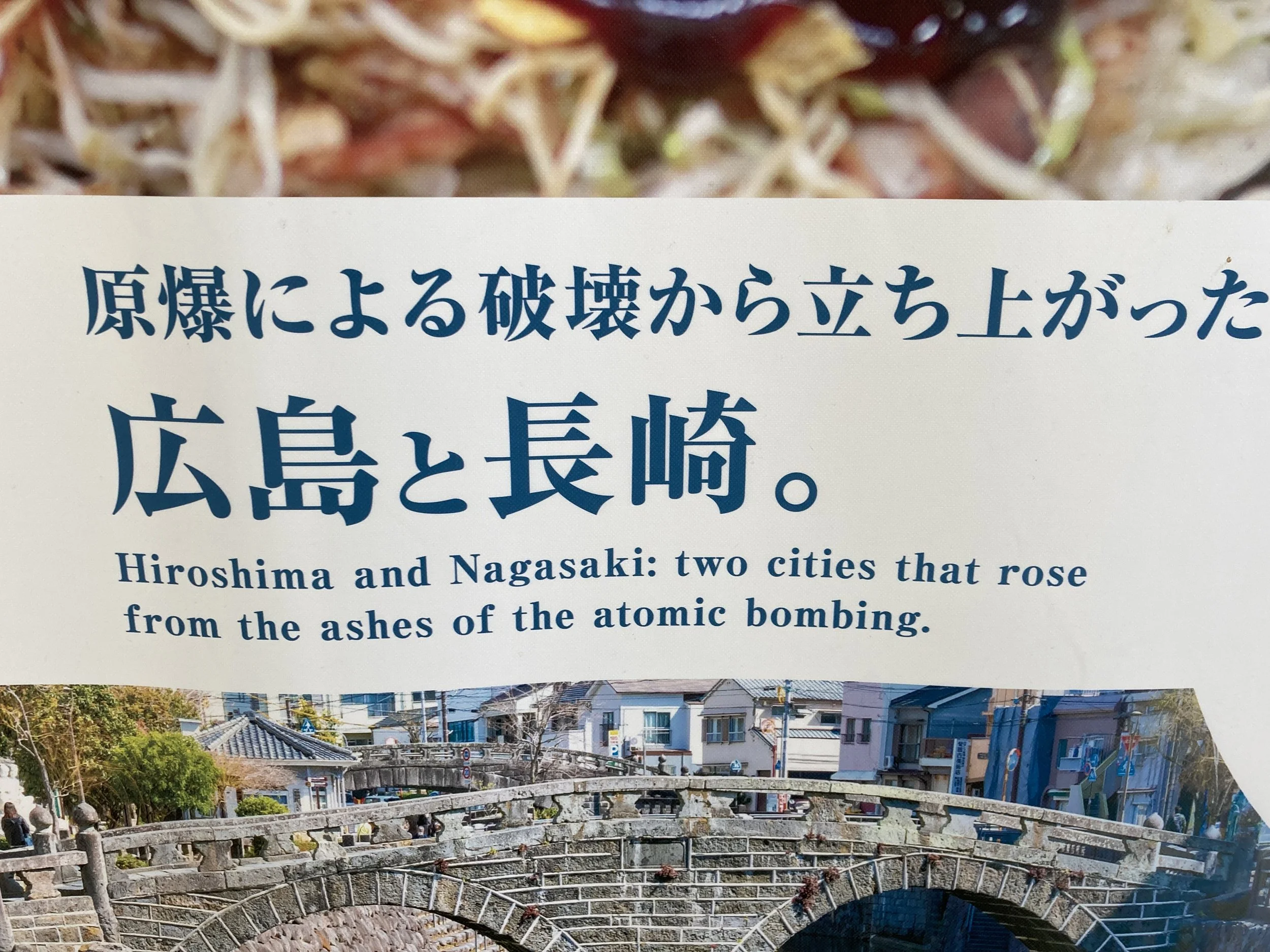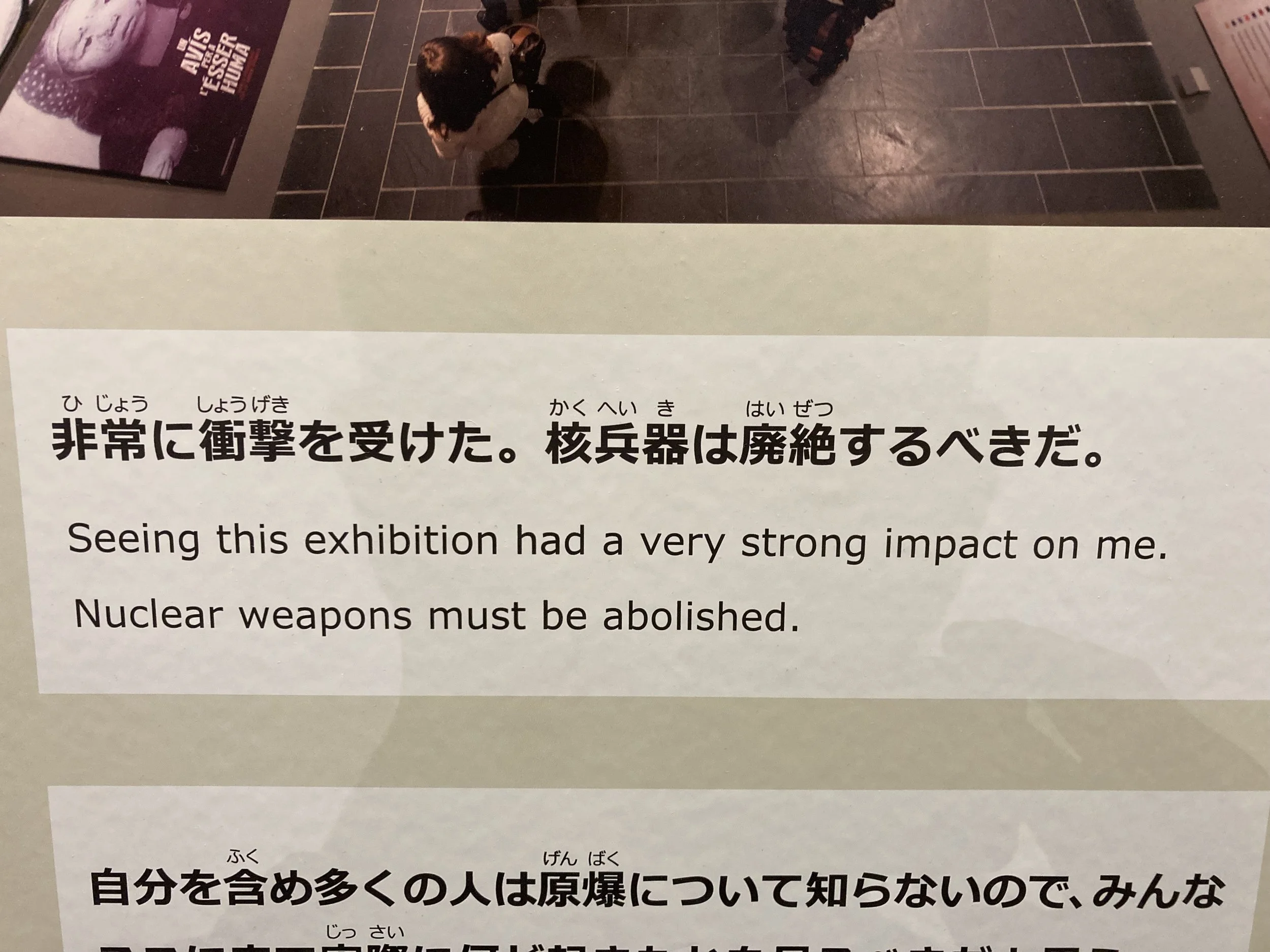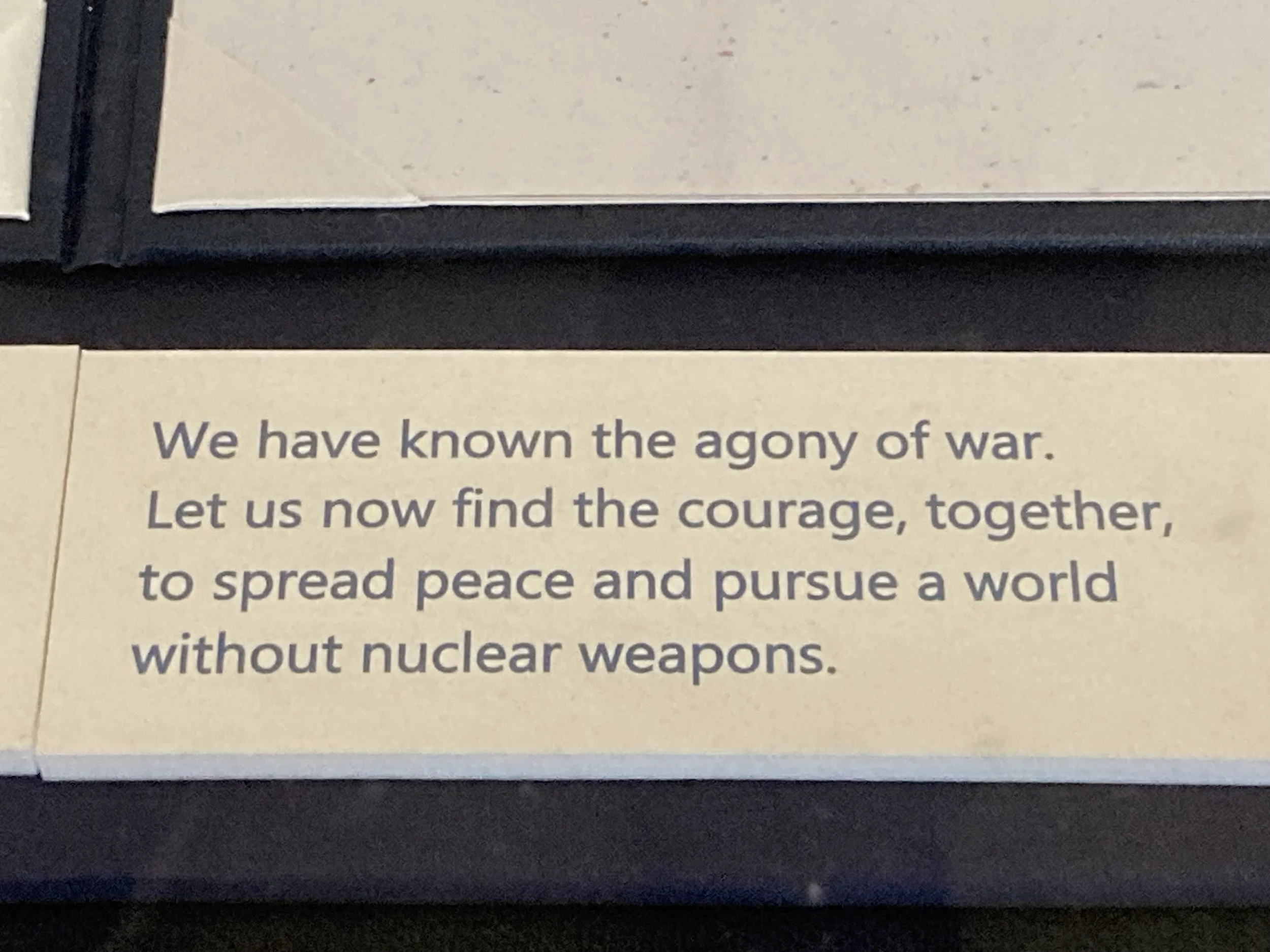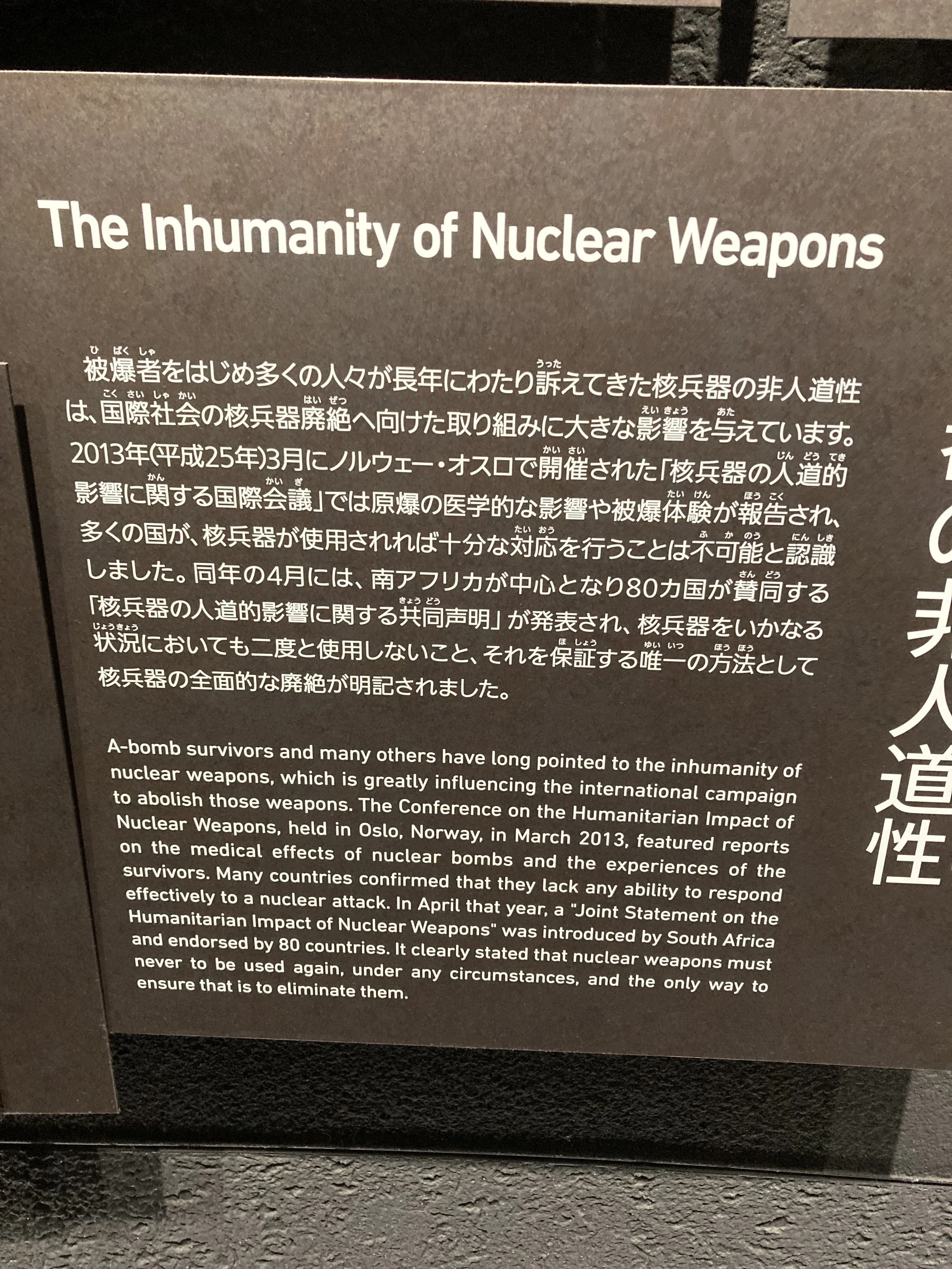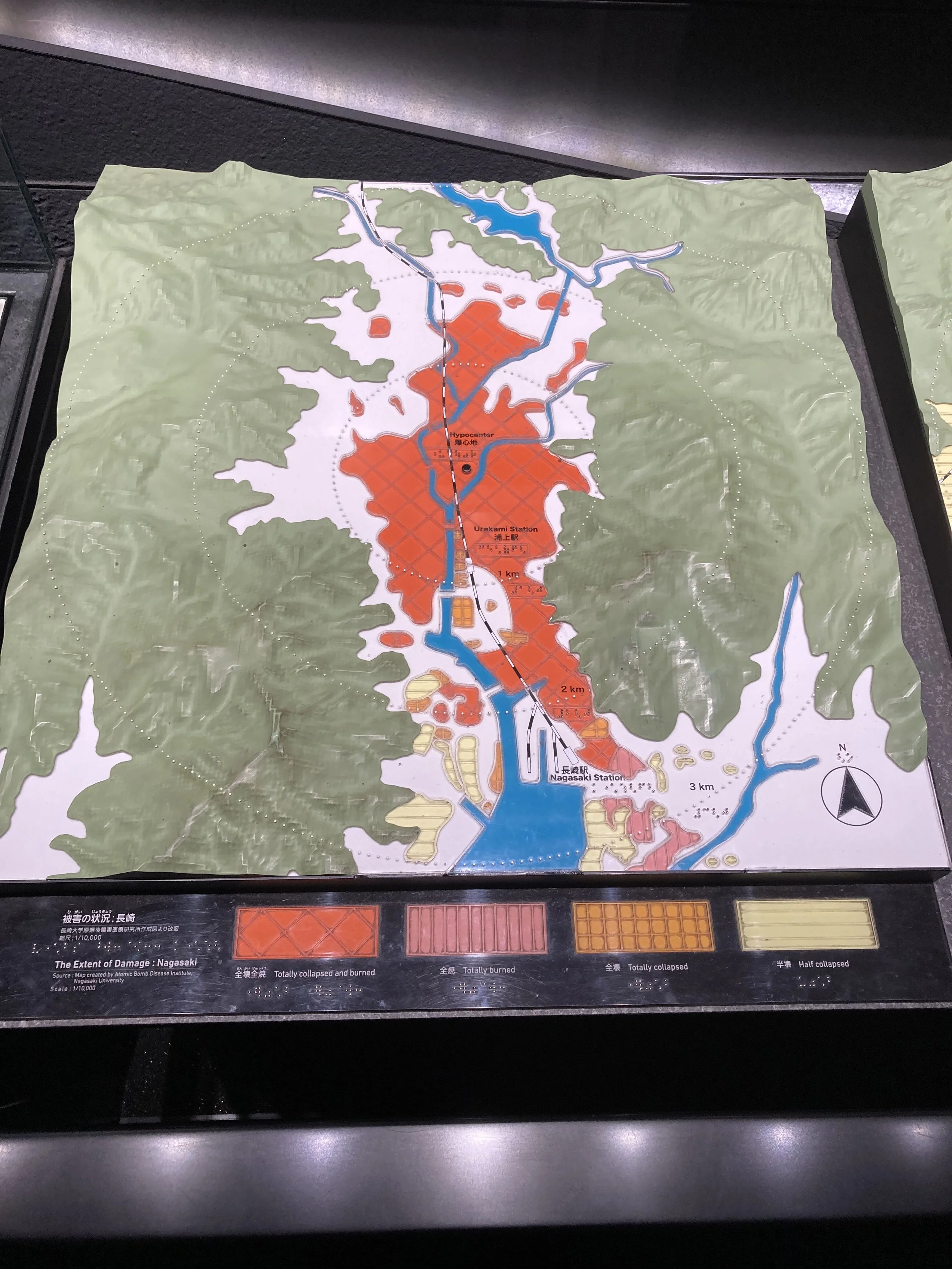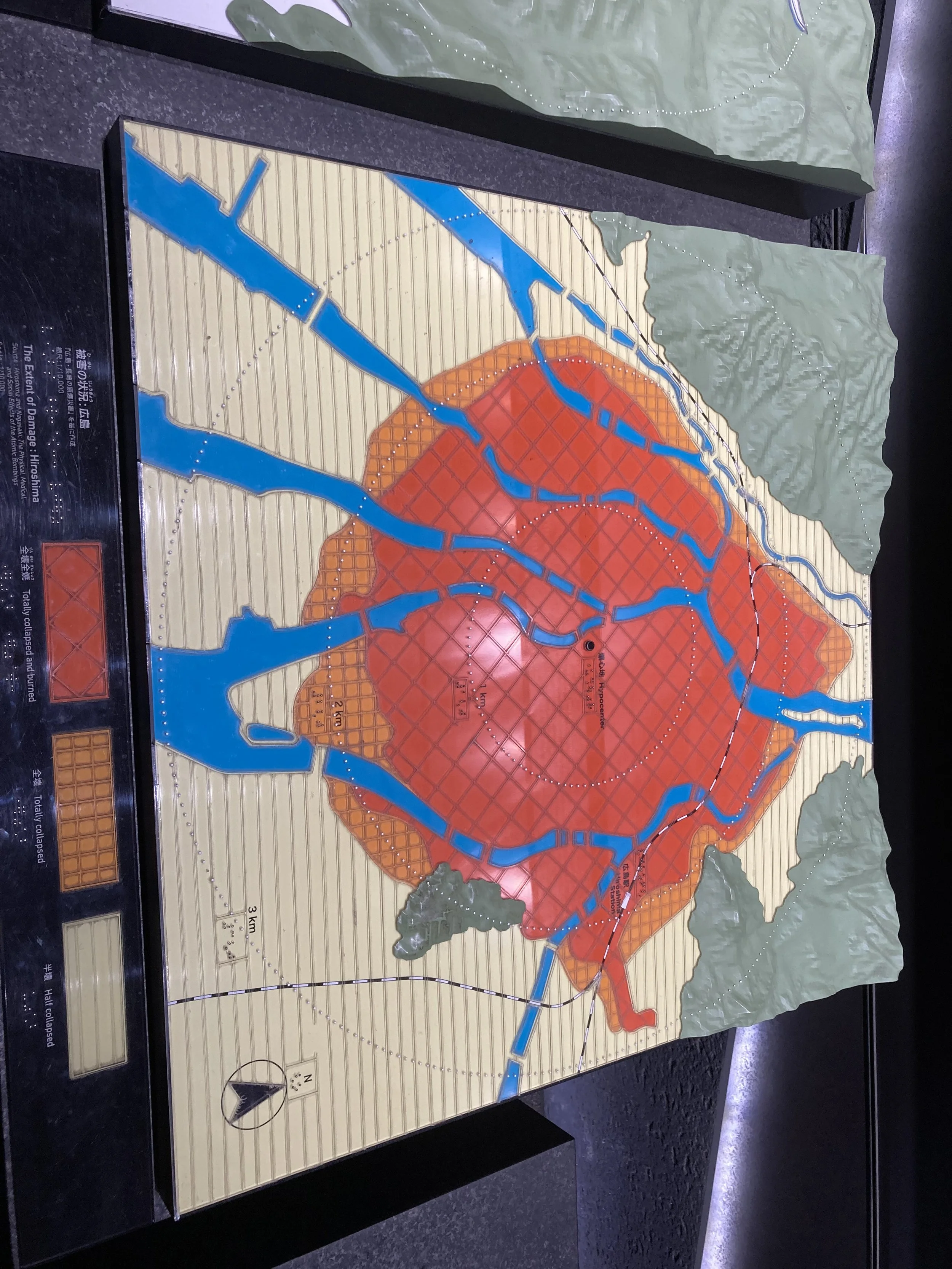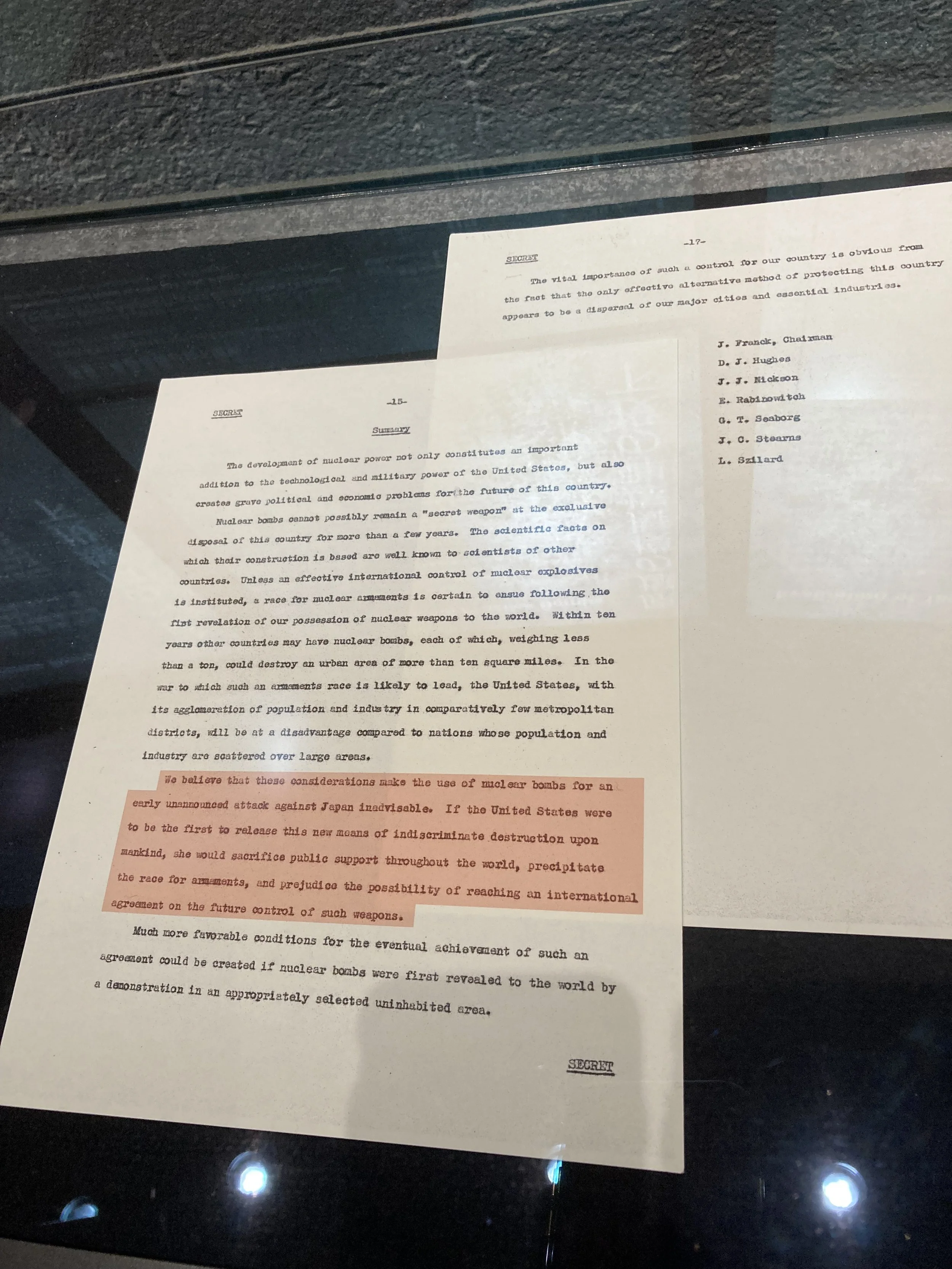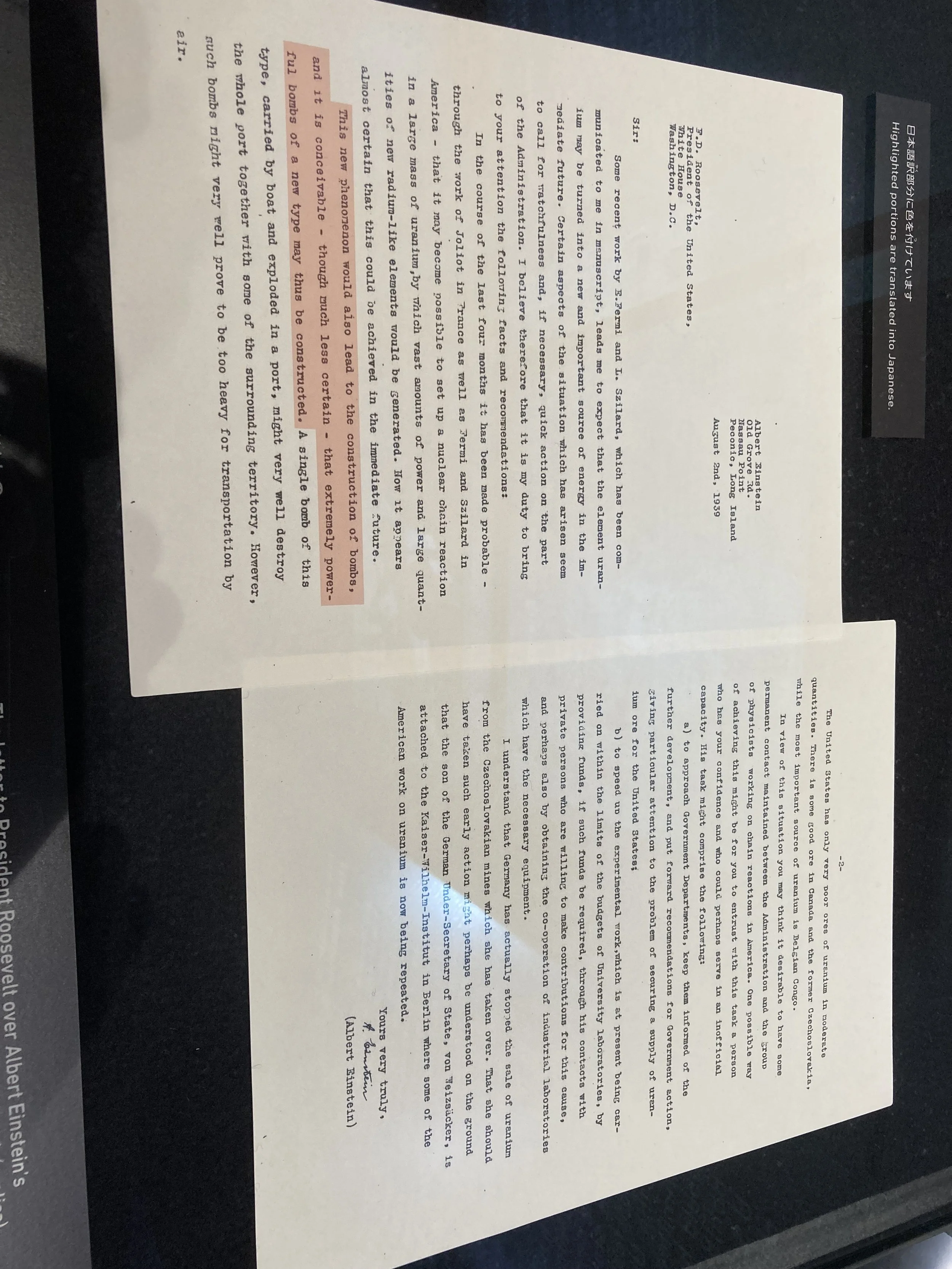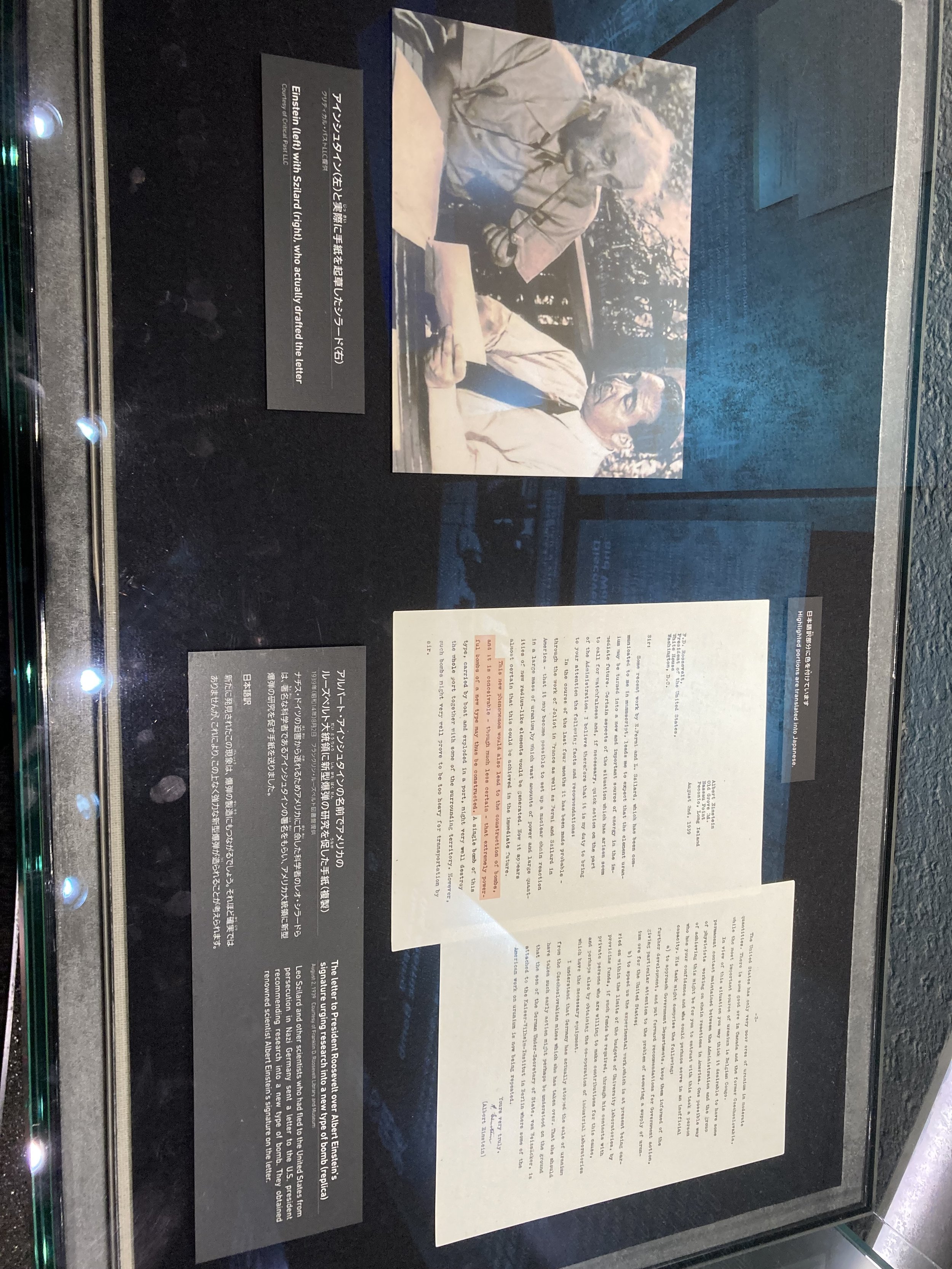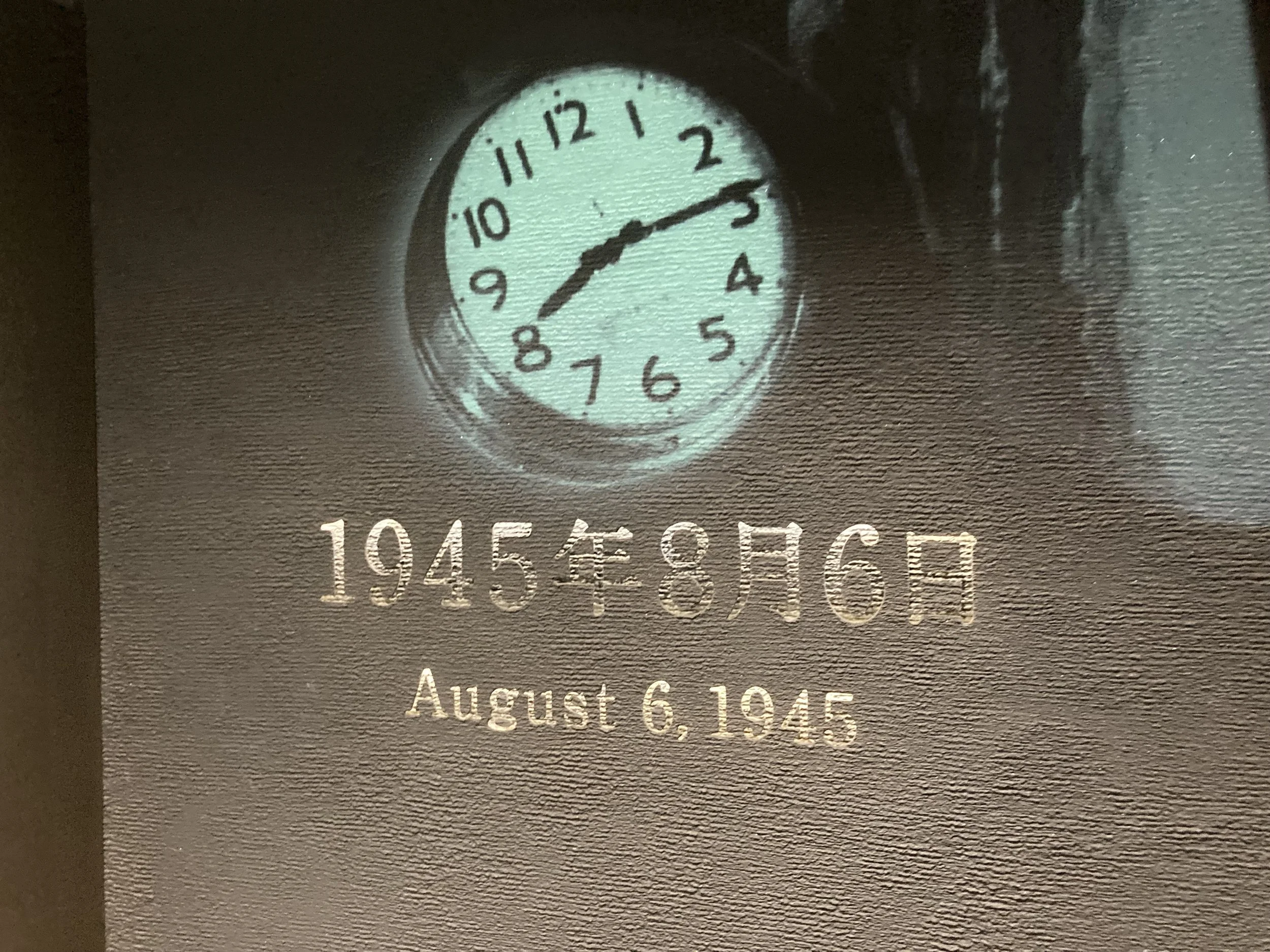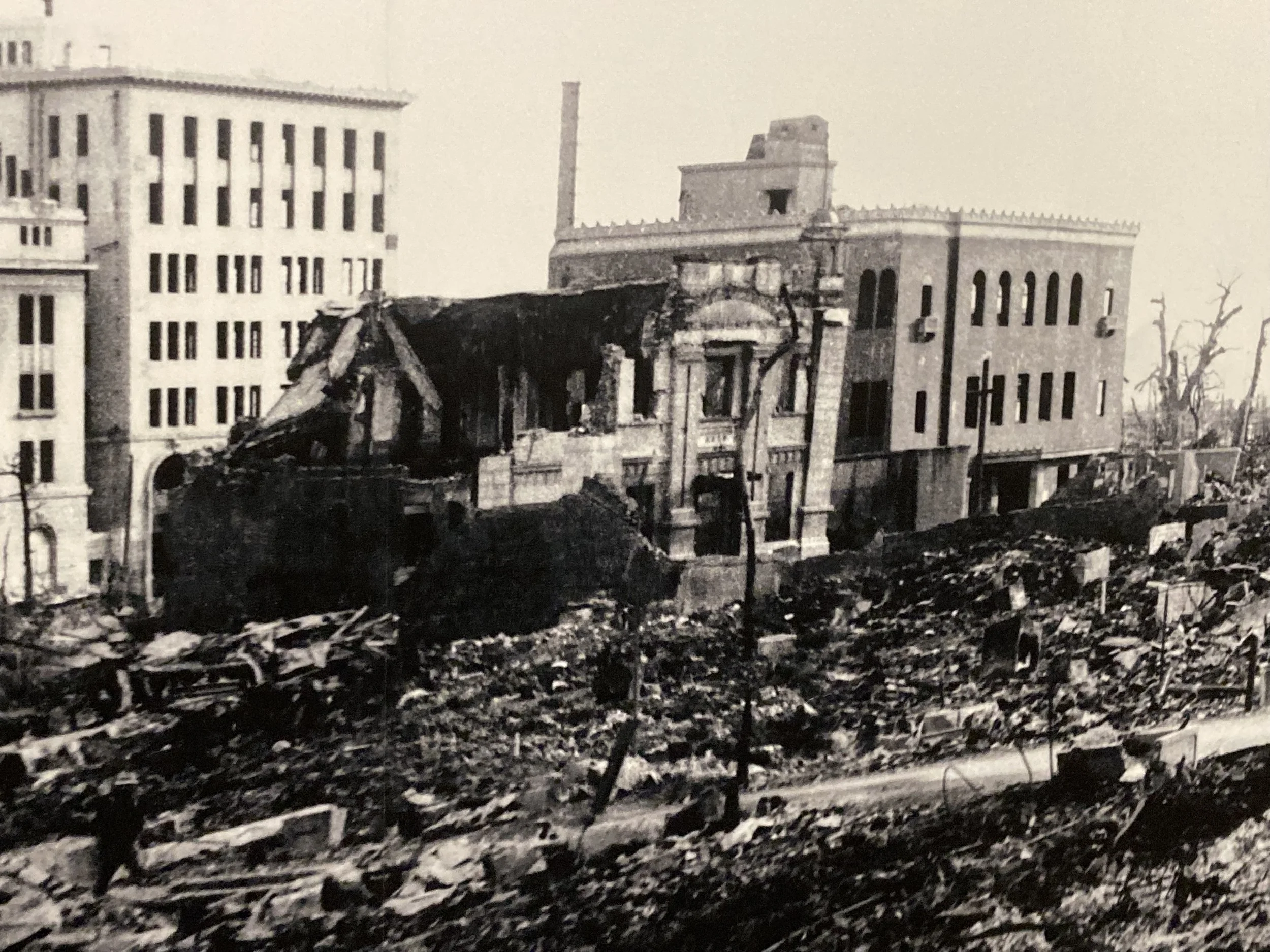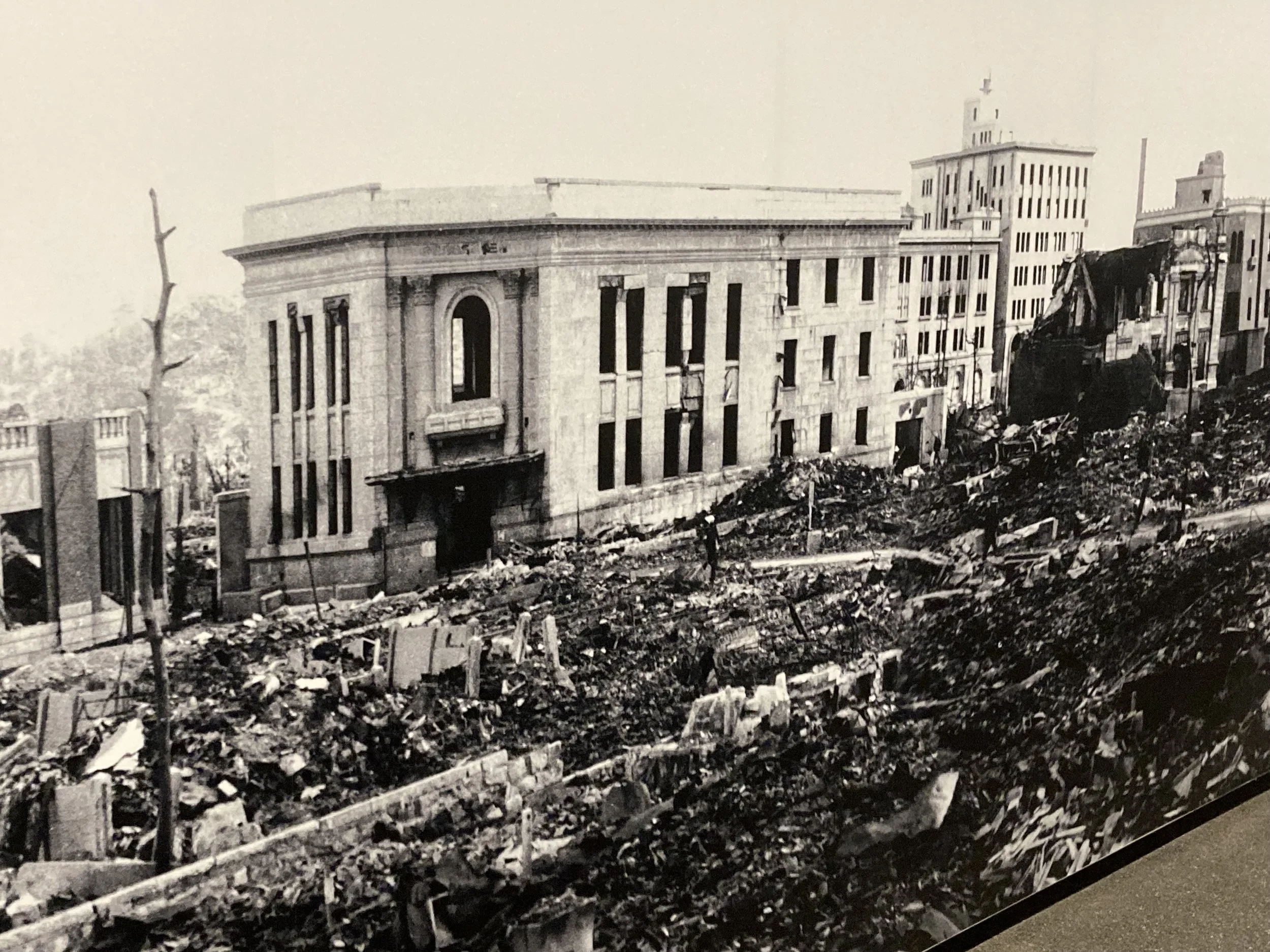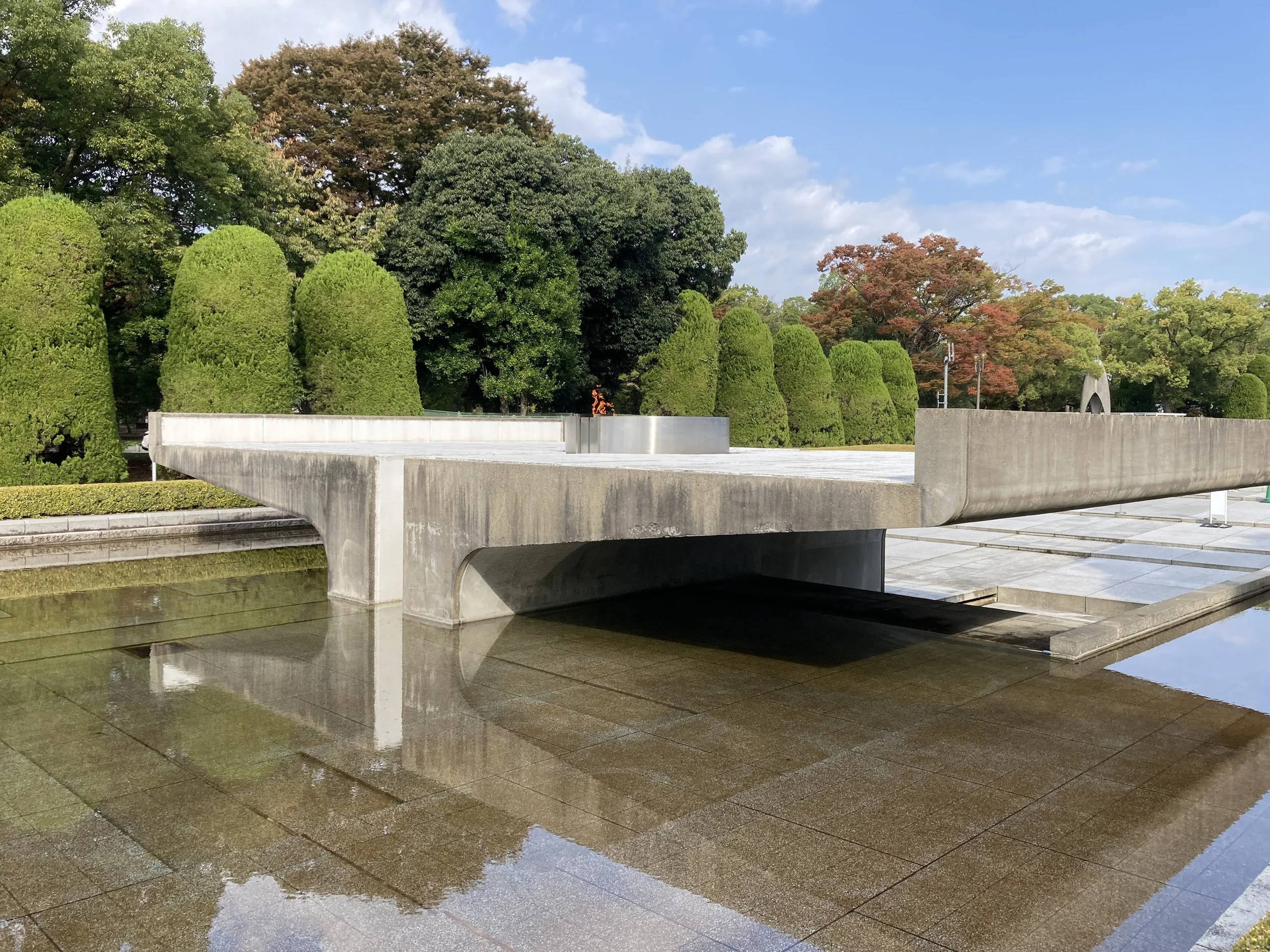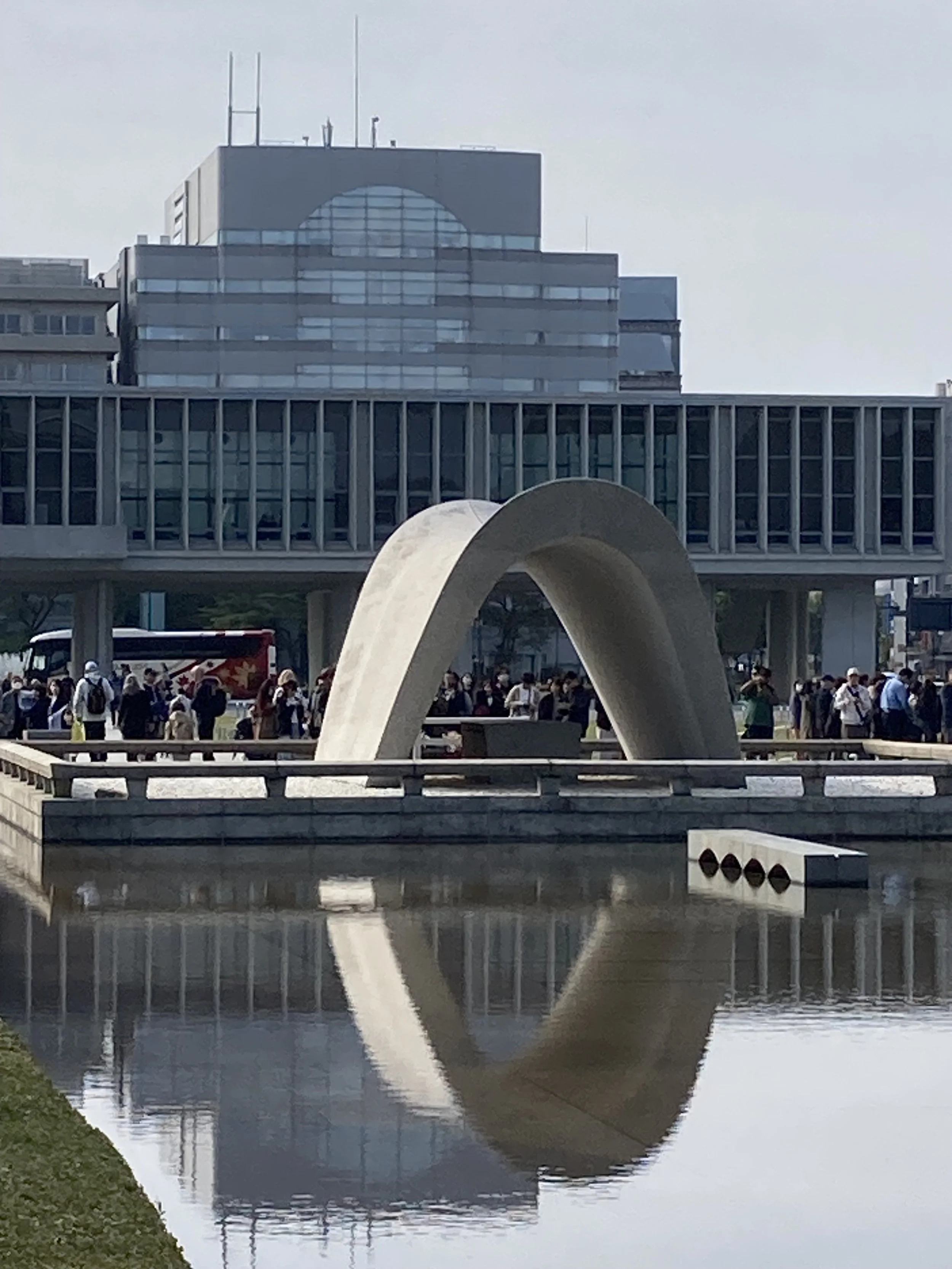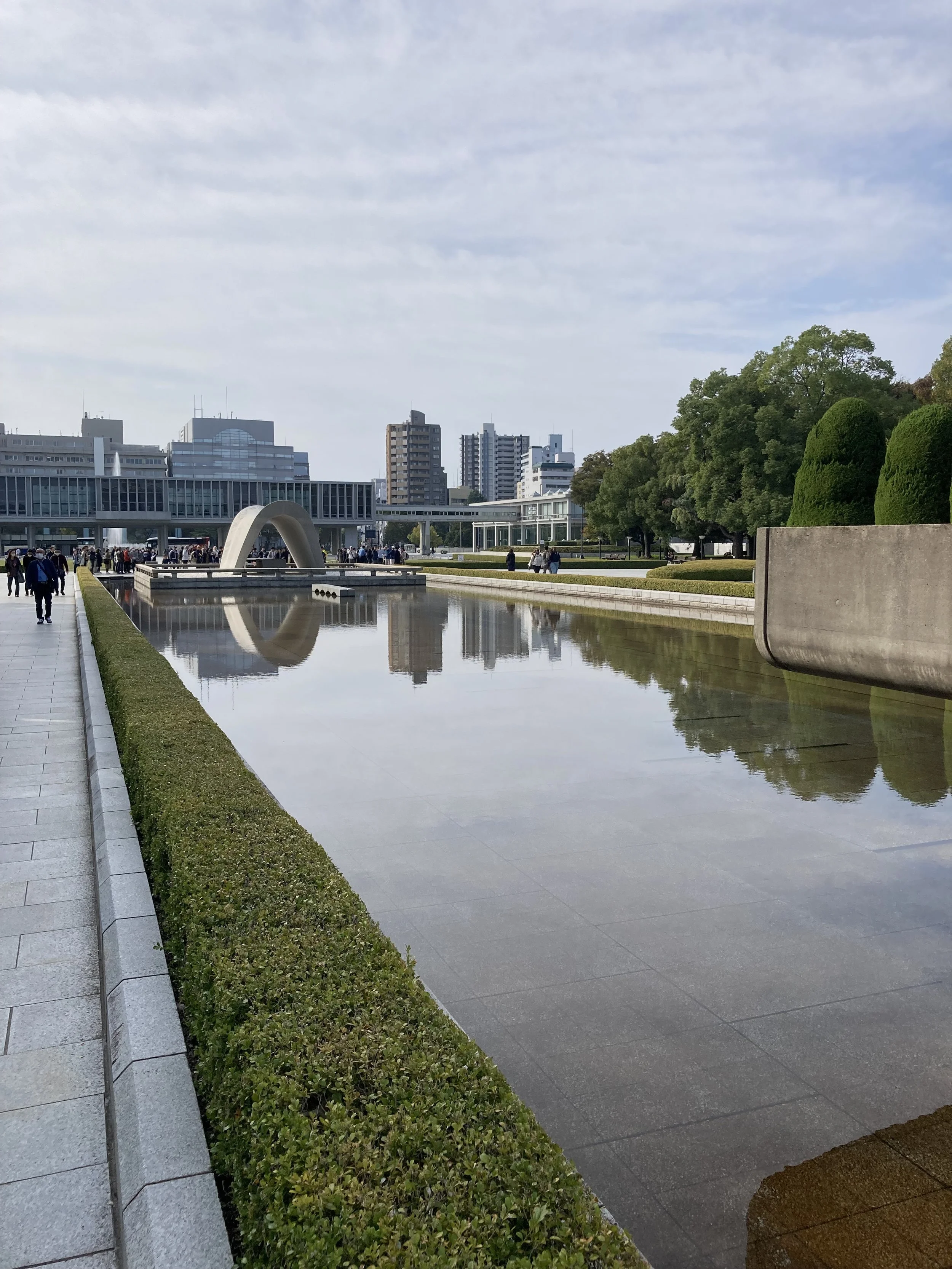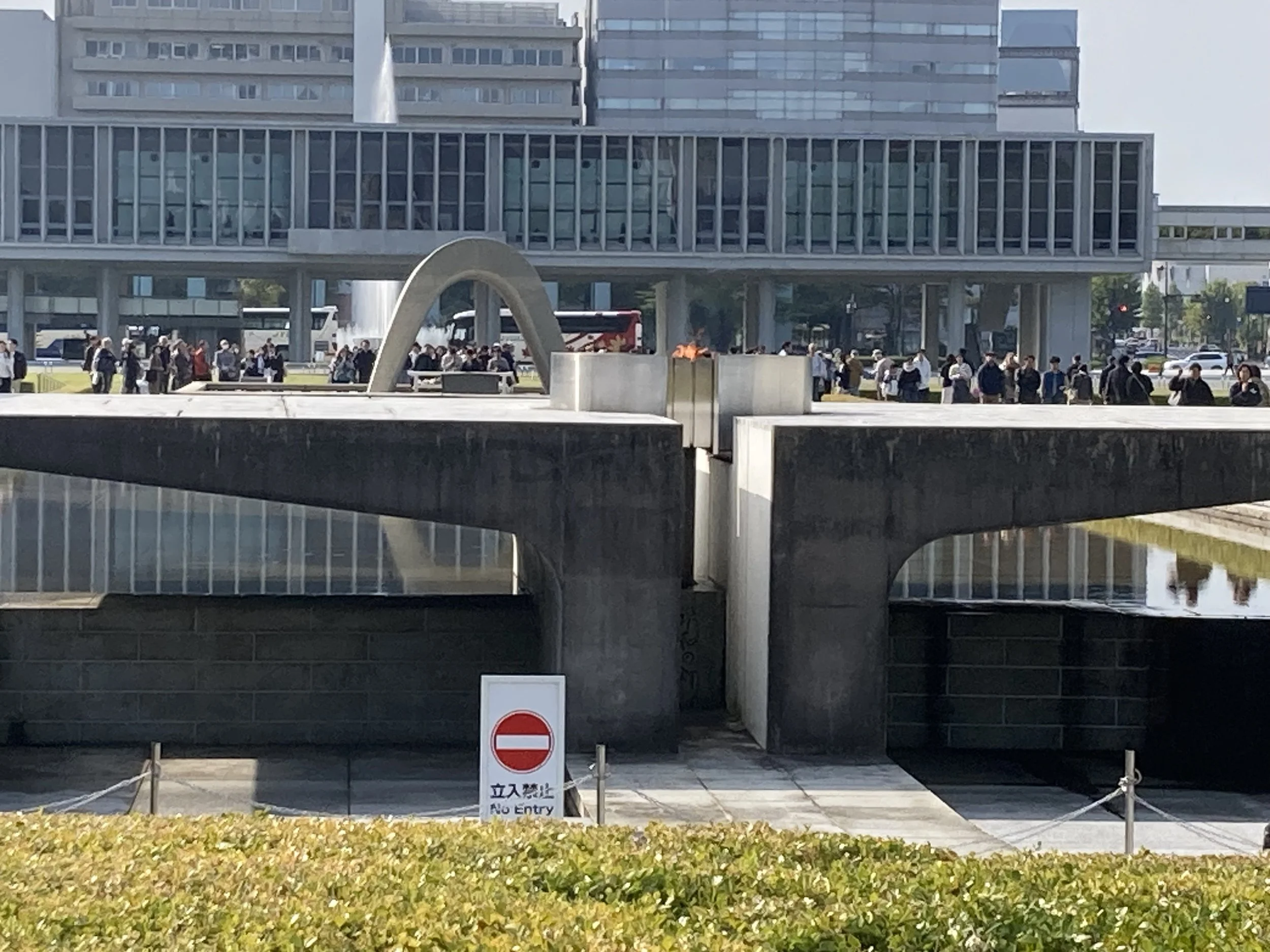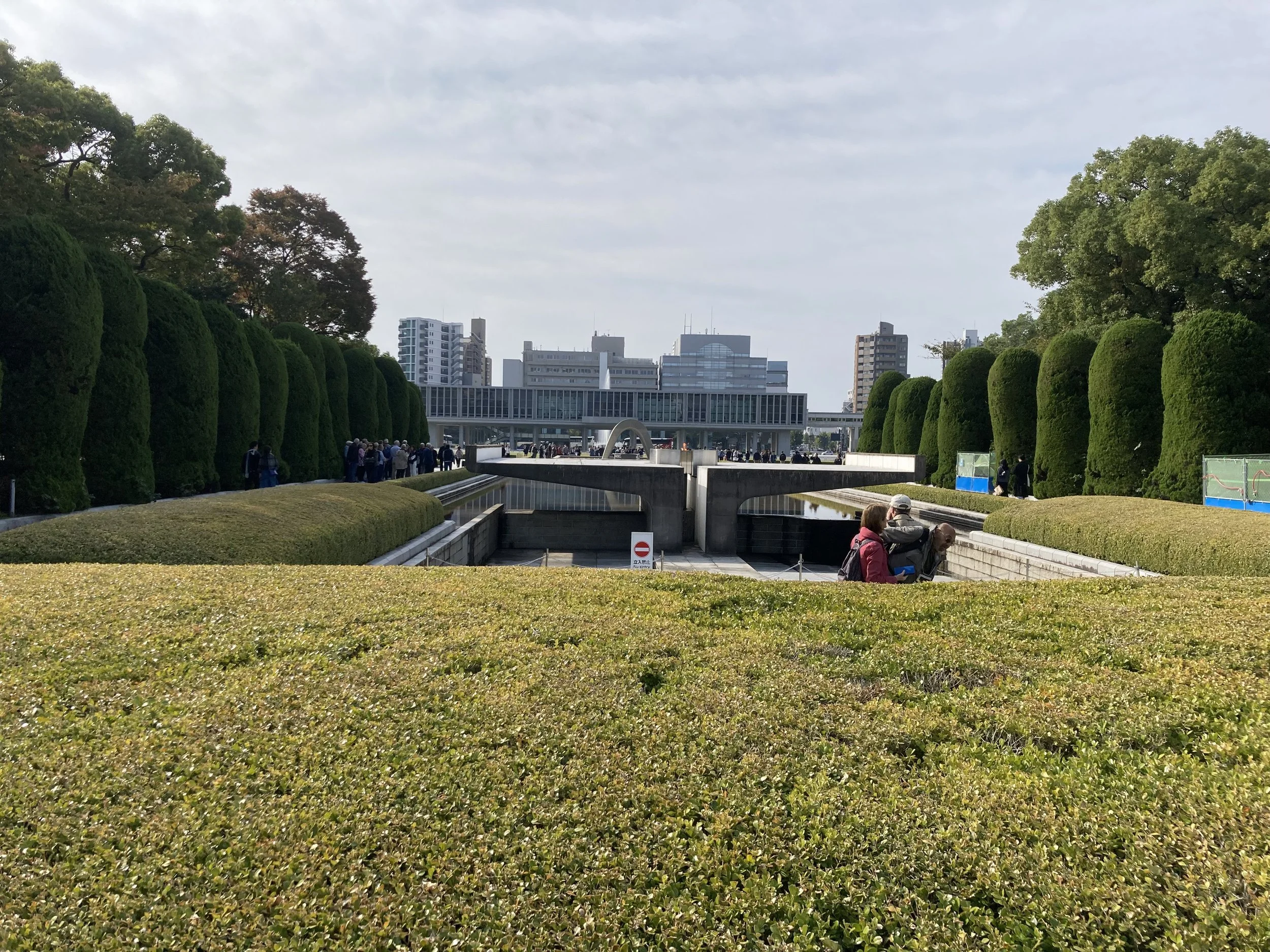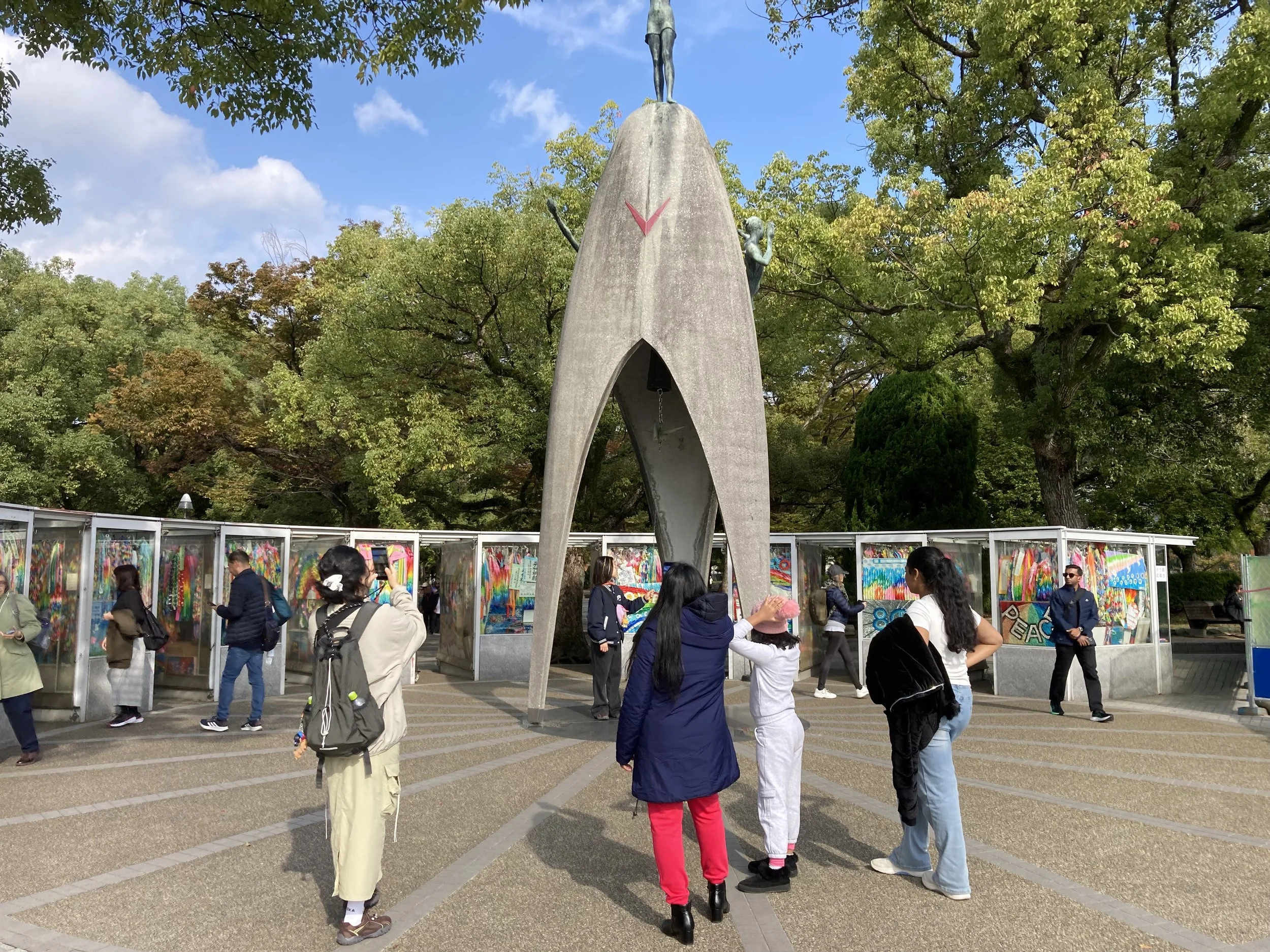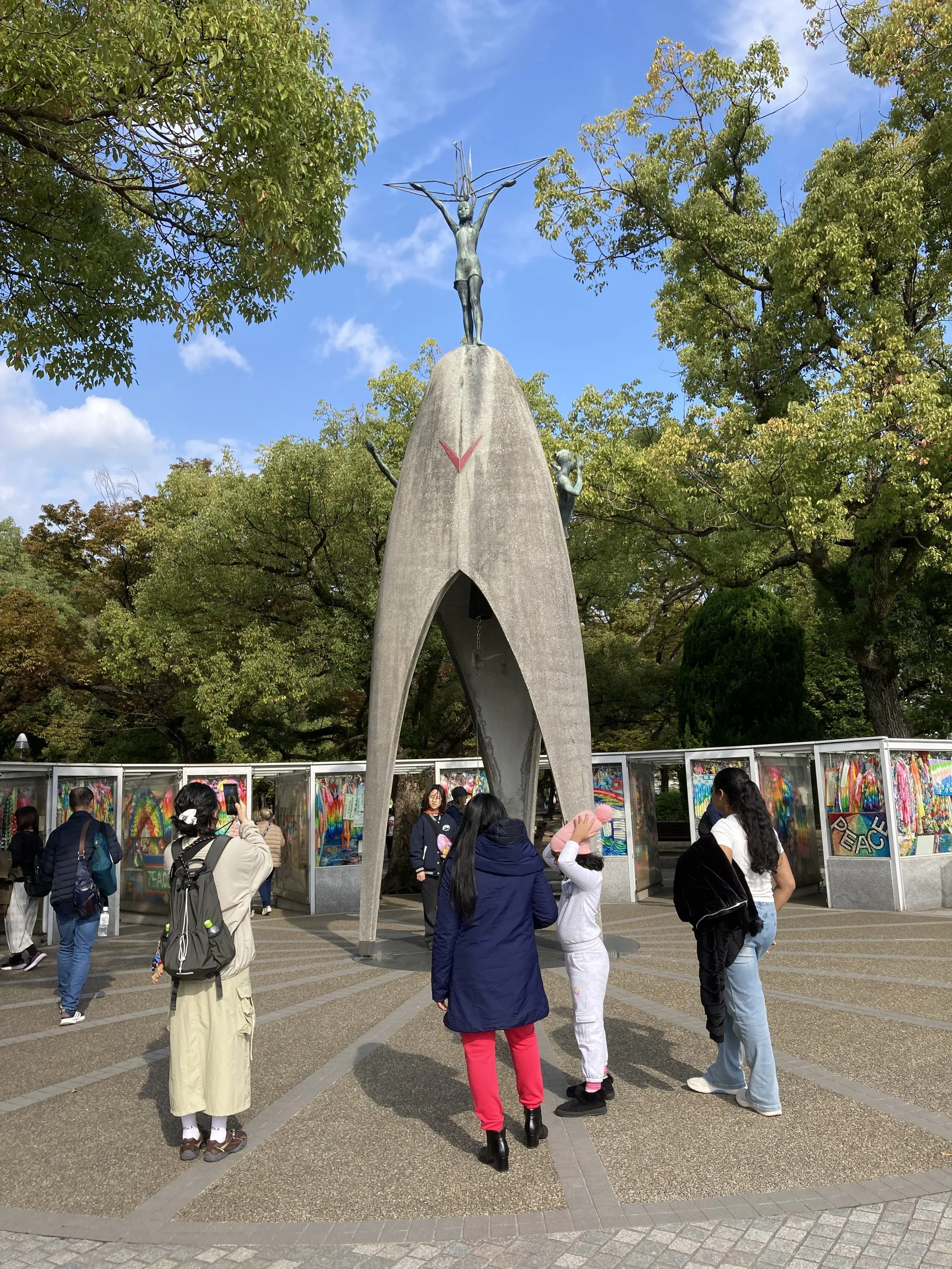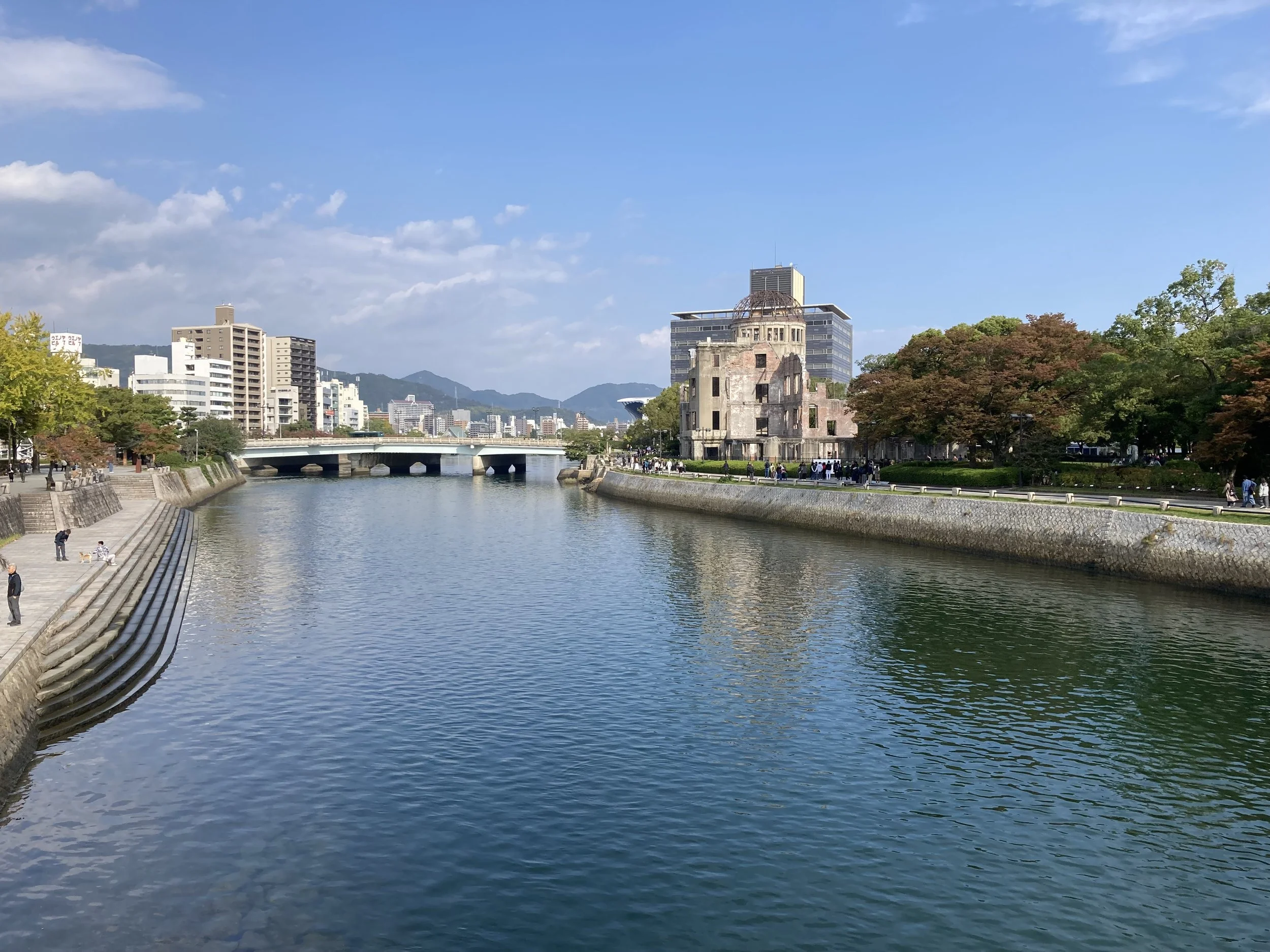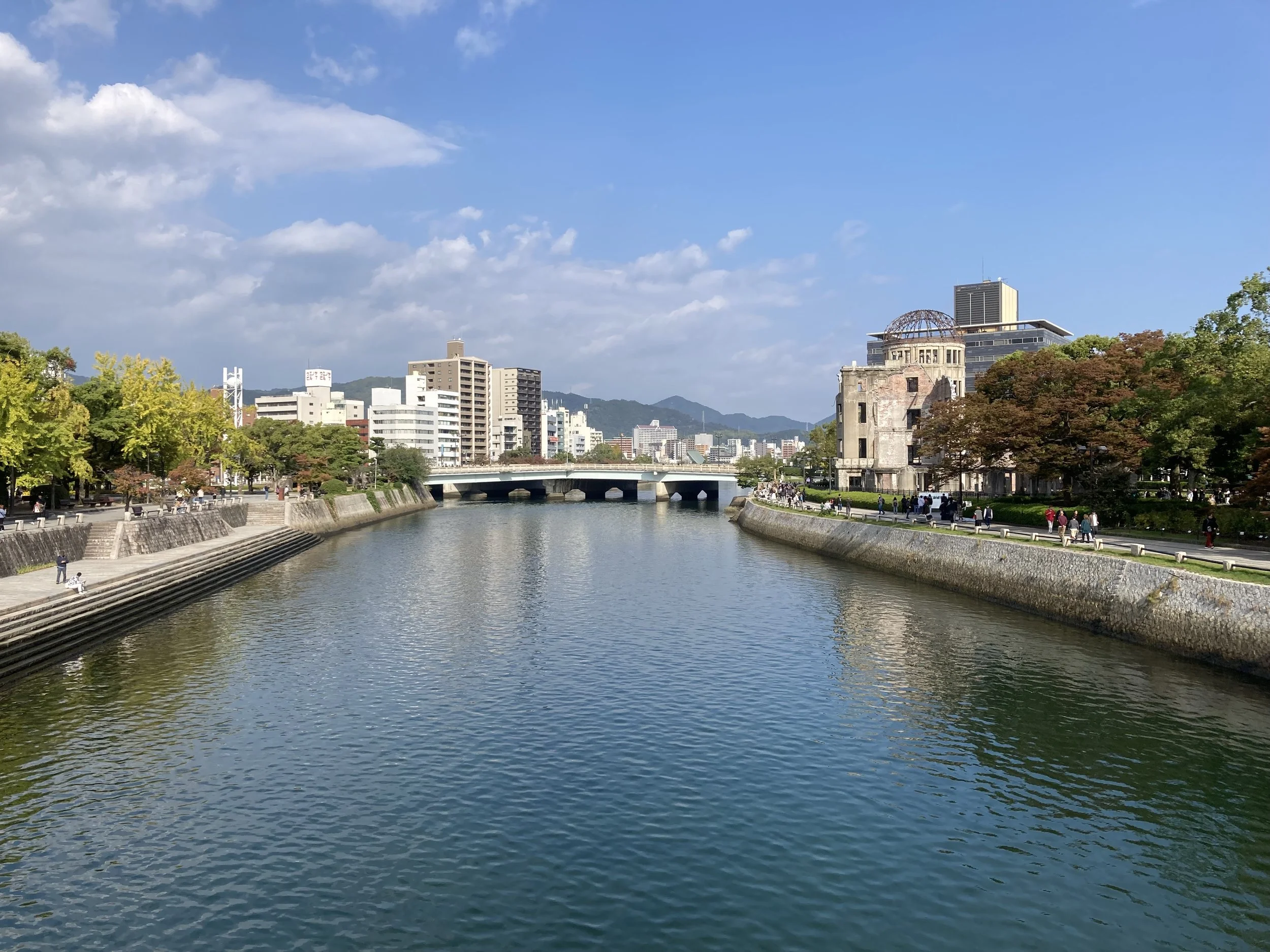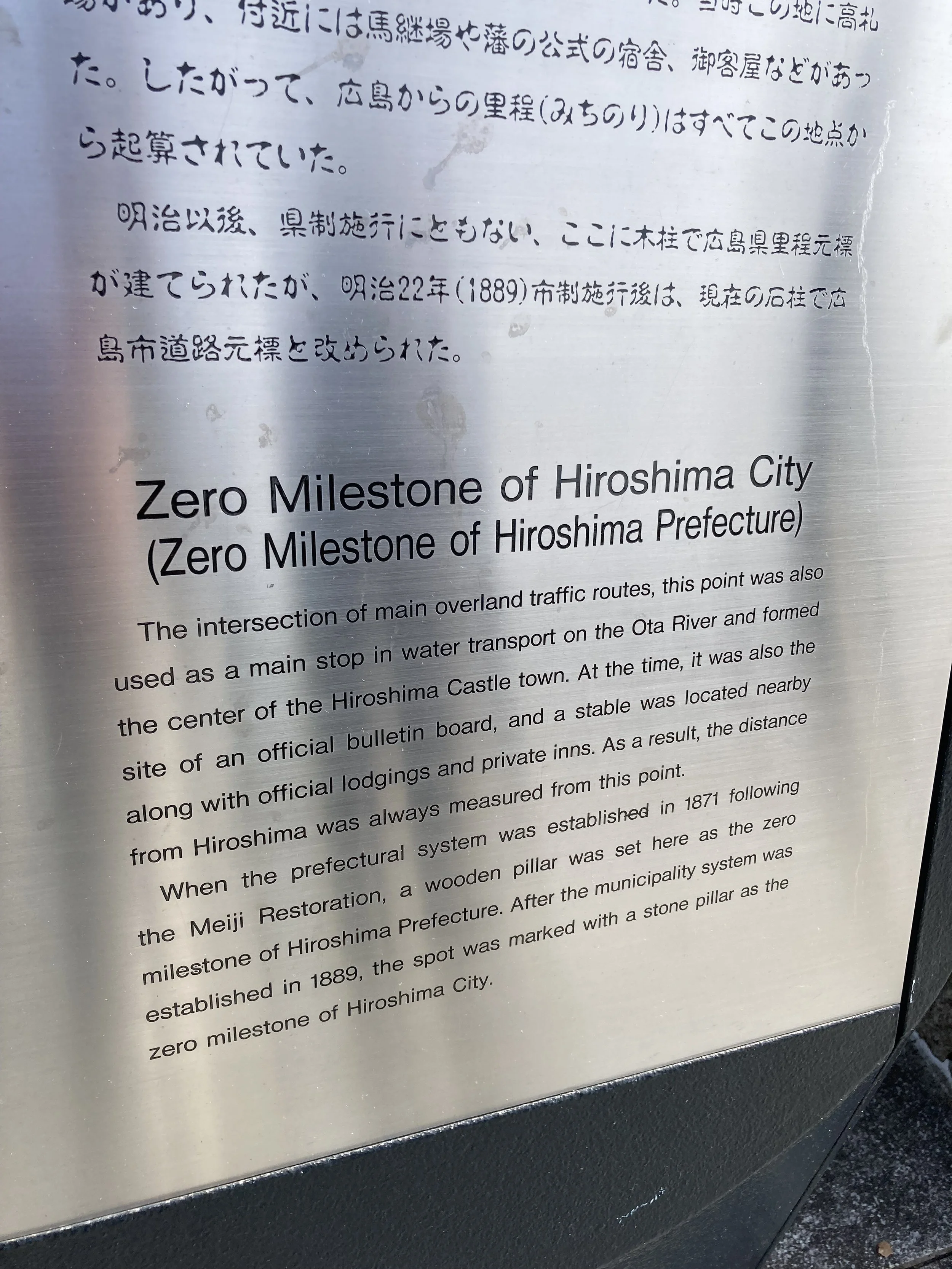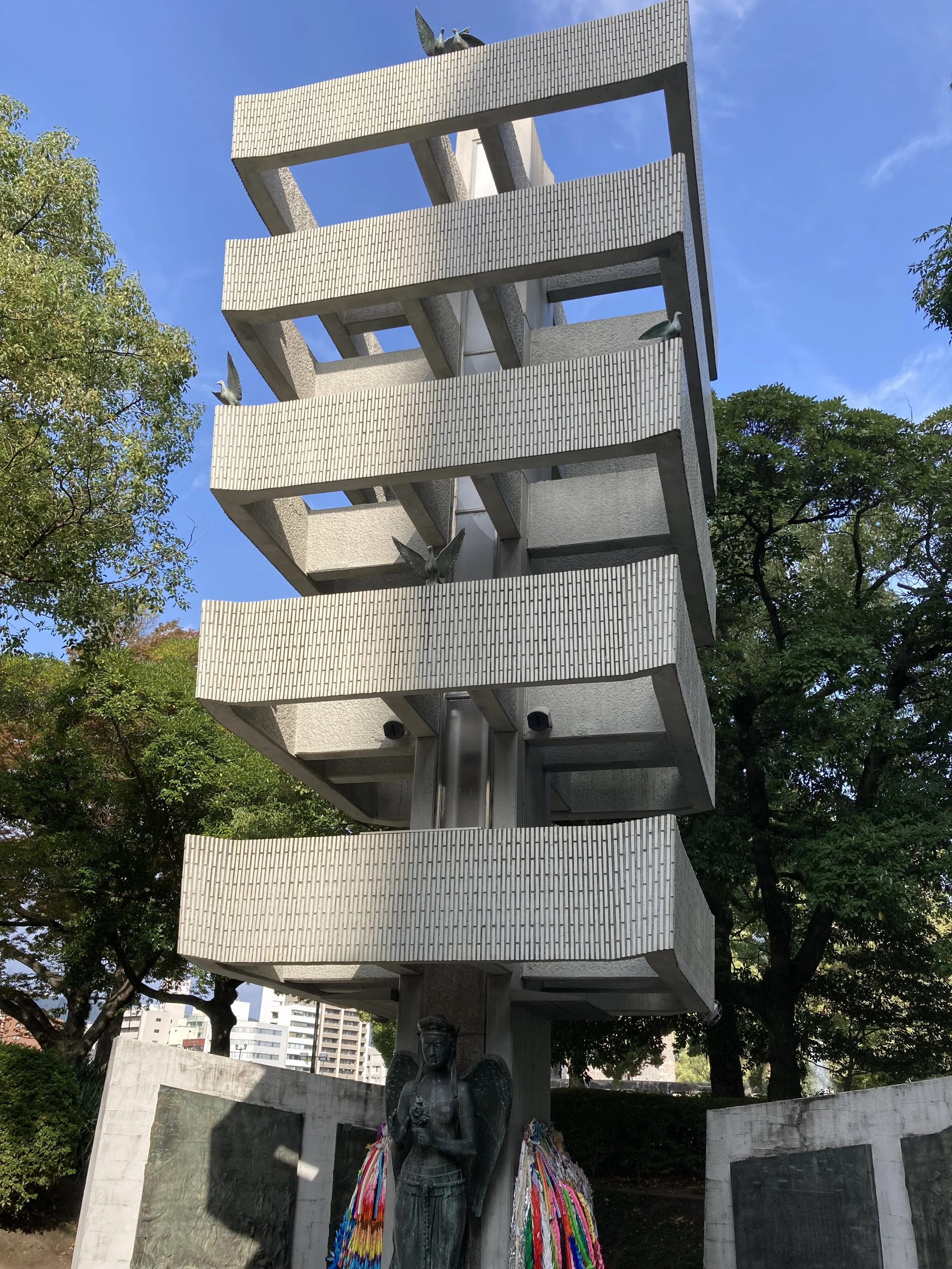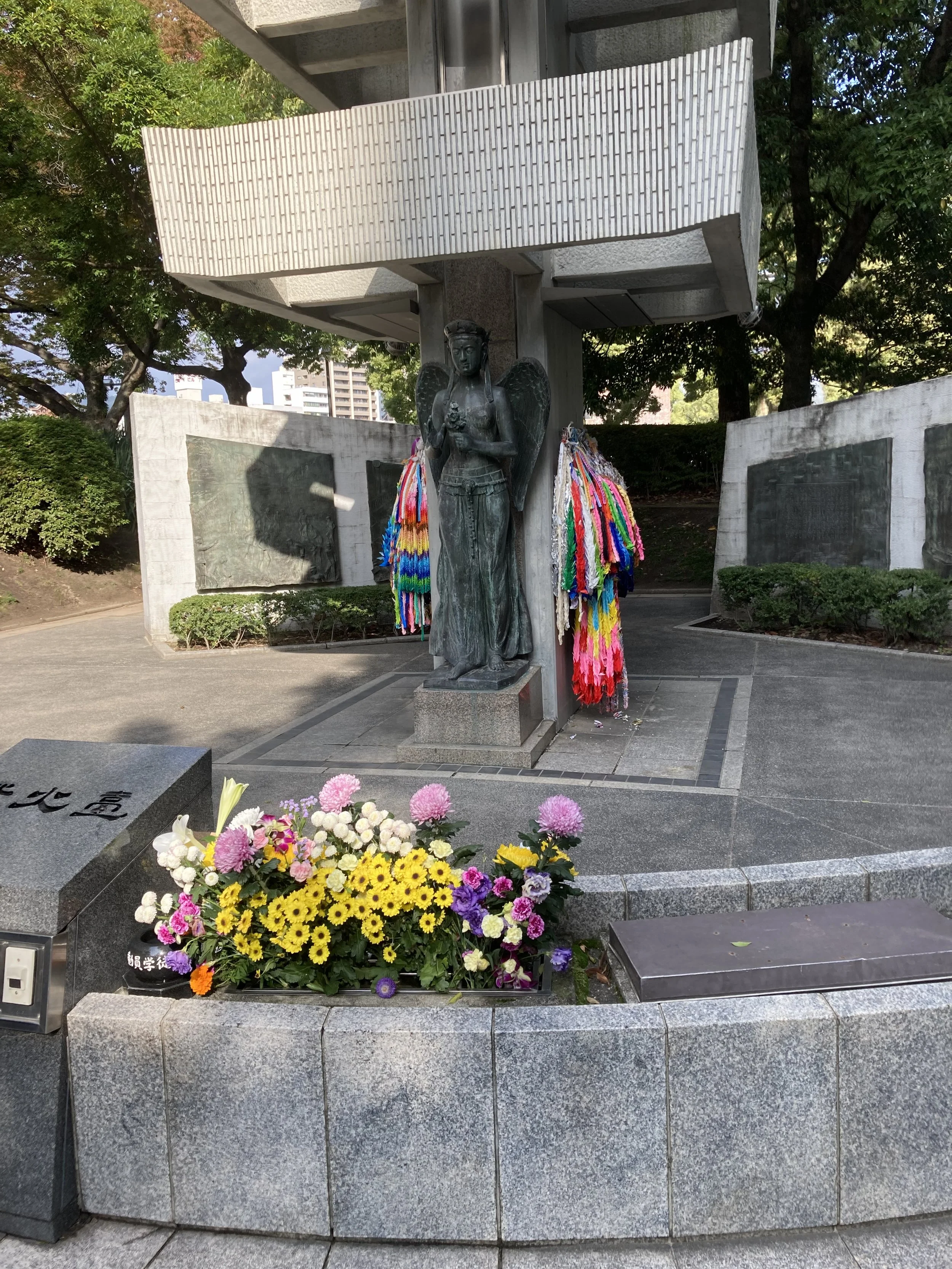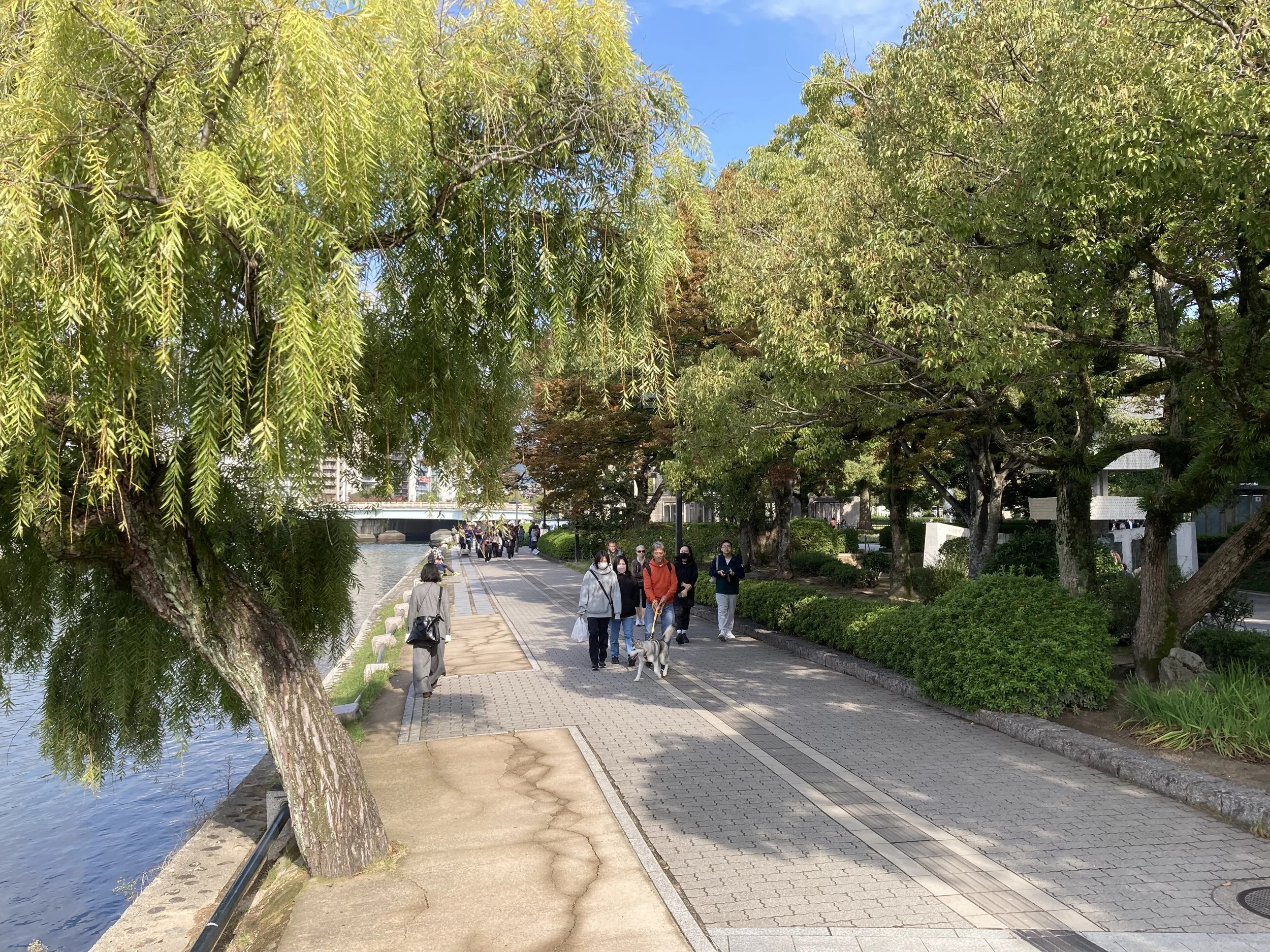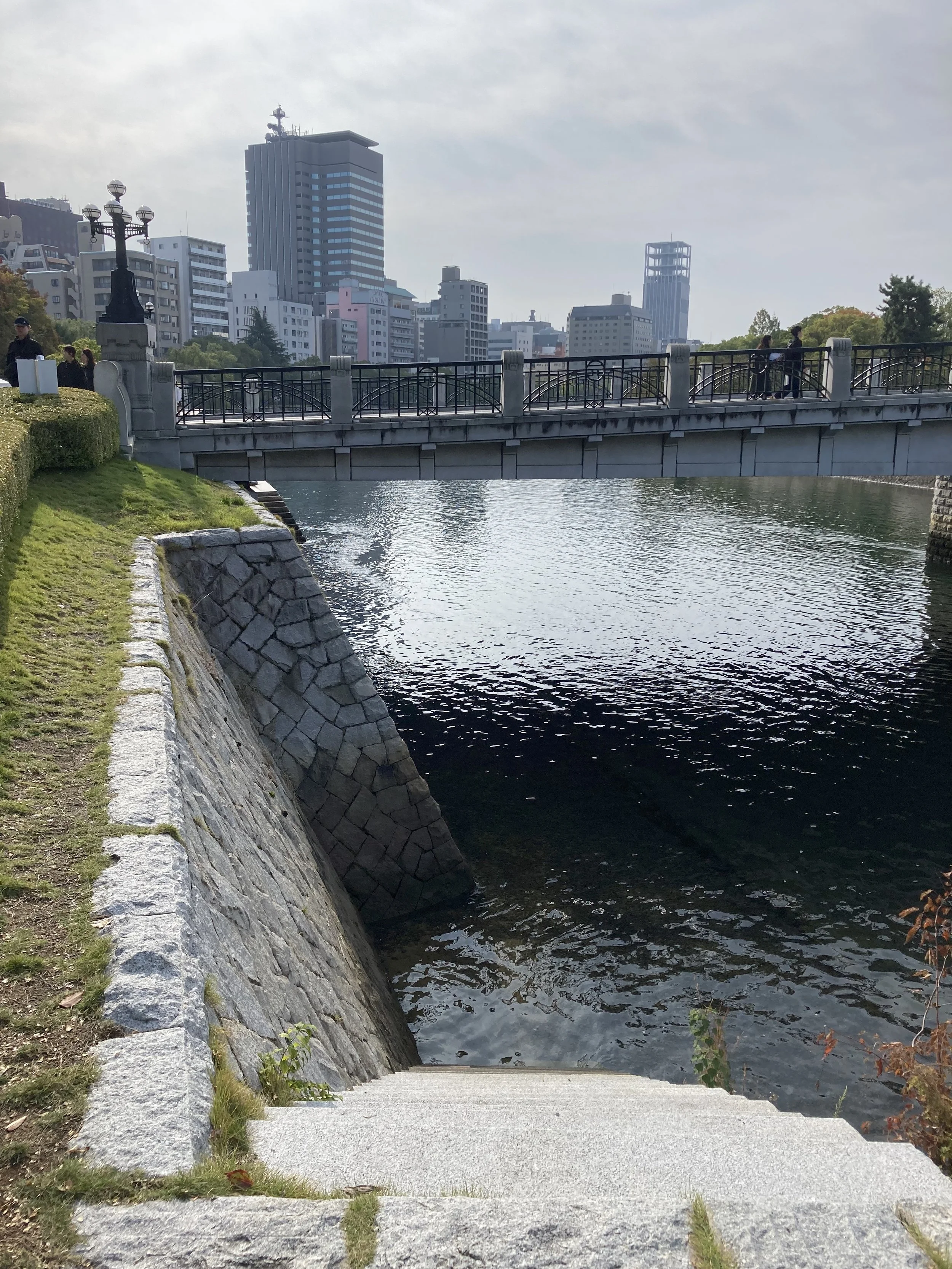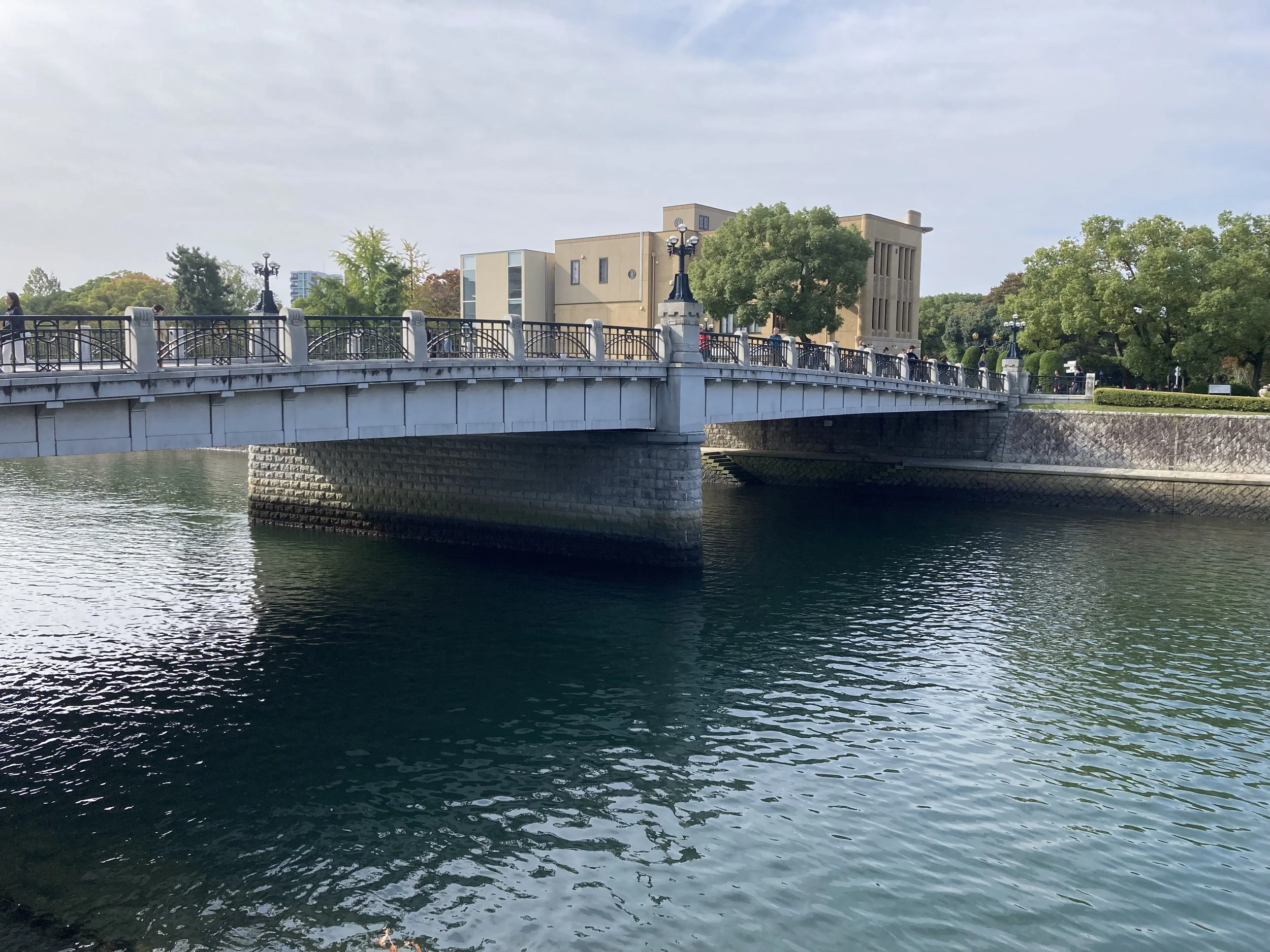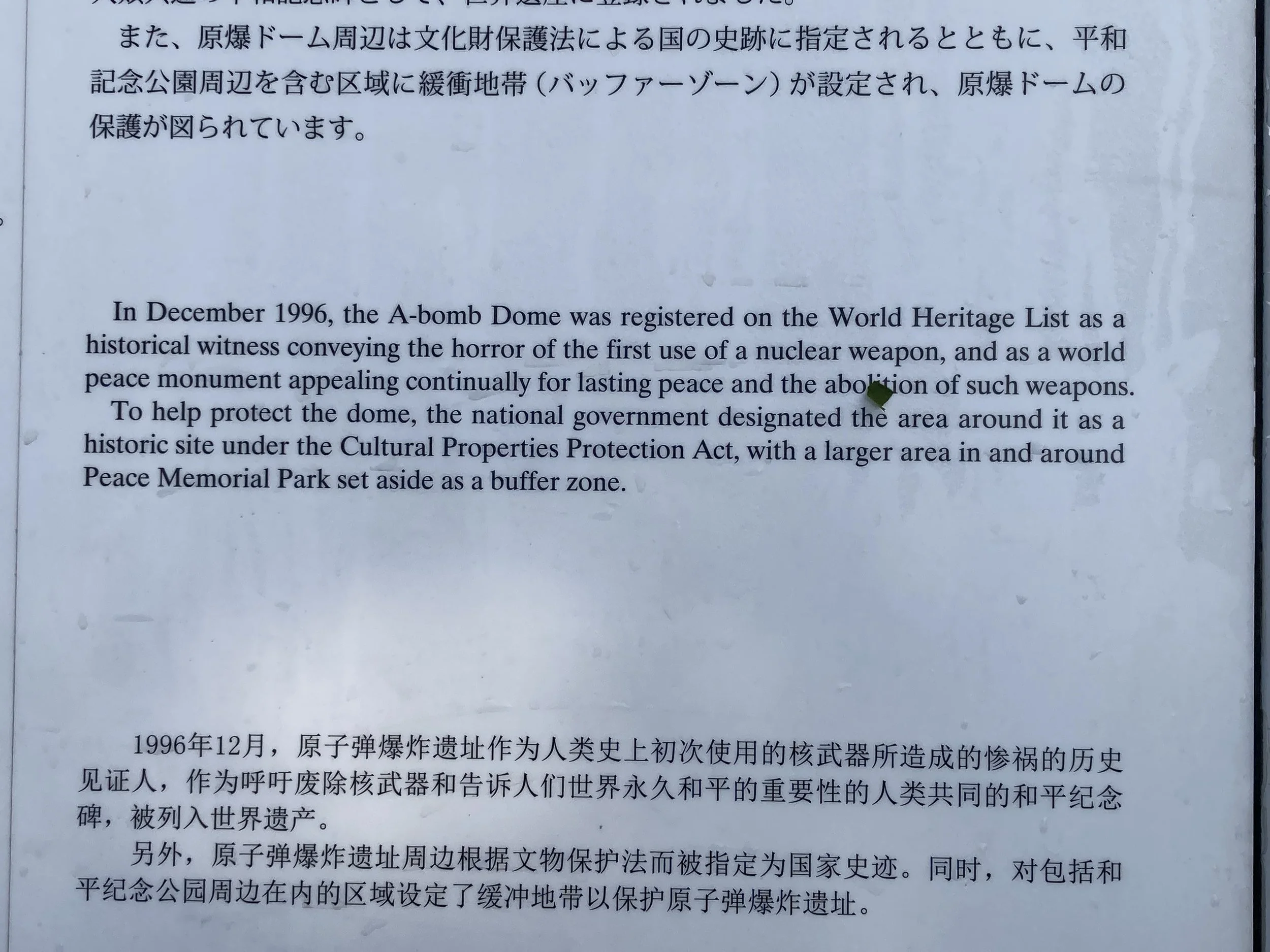Hiroshima, Japan (November 2, 2025)
Never another Hiroshima. That’s the main message from today. 80 years after the United States dropped the Atomic Bomb on Japan ending World War II, the devastation of using nuclear weapons remains evident 80 years later.
This building remains relatively the same as it was 80 years ago
When I asked Elena if she wanted to join me to visit Hiroshima, she responded that it would be “a big bummer” and why would she want to do that? I understand. And yet, this is part of my history. 80 years ago, my country decided to show it’s “secret weapon” by purposefully selecting the city of Hiroshima, Japan for the maximum damage it would create and as a means to end World War II.
What was fascinating, to me at least, was to read all the “Top Secret” (now declassified) documents from the scientific community warning top government officials about “responsible use” of this technology. Albert Einstein, for example, shared his perspective that this “secret weapon” wouldn’t be for long and that how ever we used this technology should be viewed from the perspective of how we’d like to see it used against the United States in the future.
Many of the scientists signed a letter urging the United States to warn civilians ahead of time to evacuate Hiroshima so as not to be killed or badly injured as part of the bombing. This decision was weighed against the need for a surprise attack as well as retaliation for the bombing of Pearl Harbor. War is hell, and these decisions are always examined by future generations through a very different lense.
What Hiroshima, Japan looks like today, 80 years after the bombing
Here’s around the first picture of the building kept untouched
At the end of the post, I’ll share some of the more graphic stuff so you have time to opt-out of this post and click away. I’ll give you fair warning so as not to surprise you with it as some of the pictures are very graphic. I share them only because many countries still speak of using nuclear weapons today. In fact, there are more than 10,000 nuclear weapons in existence today. This threat is very real and it’s important that we understand this devastation so it’s not repeated.
Scale model of the first building pictured in this blog
What’s left of the building after the atomic blast (few standing)
The thing about the Hiroshima Peace Memorial Museum is that it’s one of the least expensive museums I’ve ever paid to visit at 200 yen (or about $1.30), and yet it’s one of the most memorable ones. Educational, interactive, visually stunning, and purpose-driven. It has even painstakingly taken its extensive exhibits on the road — which is no small feat. For example, take a look at these shoes which were incinerated by the atomic blast:
Consider the unique challenges in transporting something delicate
Consider the fact that showing an article of clothing really brings home the destructive power of an atomic blast without showing the graphic nature of the people hit by it. And yet, how do you transport something that is so delicate? Vibrations can destroy them. Even too much heat or air can have big negative impact. The cost of “protecting” these items are cost prohibitive. So what do you do?
Painstakingly create replica items that can be easily transported
Genius! Side-by-side they look identical. And yet, the replicas are much sturdier and can easily be transported without all the extra precautions and additional cost. Now the museum can create several versions of key items and ship them out to multiple destinations and create mobile road shows of these incredible exhibit — which is what they have done and continue to do world wide.
Why? To help prevent another atomic bomb attack.
Survivors travel the world to tell their stories for as long as they live
Equally powerful are the stories told from the survivors — most of them children at the time. They were in school when the bomb went off. They had only minutes to get down on the ground and cover their eyes and ears for protection. Their stories are harrowing and many. But before I share anything further, I want to share a few more images of “things and stuff” that were destroyed by the blast and give you an opportunity to bail out after that.
Okay, please jump off here if you are an empath or do not wish to see any images that can be visually disturbing. The following are not intended to harm, but rather to inform and to help heal. Part of the healing process is to own the reality of what happened in Hiroshima including the 140,000 people who were killed in this atomic bomb blast 80 years ago.
This was one of the first images you see walking into the museum
While less graphic than some, this was a moving image because of how this girl’s story plays out. She was one of the lucky ones. She survived the blast. She was a young girl at the age of 10 when this picture was taken and 1,200 meters from the hypocenter. Her full story is below. The short version is that the bomb fused her hand together, but she was able to get surgery, get married and have kids until she developed cancer in her 30s. She made a brief recovery but ultimately died of cancer and other complications at 42.
Many of the survivors of the blast either died of radiation or cancer after the blast. The death toll continued to rise long after the initial damage was done.
Story of one of the survivors of the atomic blast who died of cancer
The aftermath of the blast is often something that is not well understood. The black rain was another devastation point even after so much clean up had already taken place. Radiation in the air as clouds were cleaning out more and more of the toxins and the black rain was dropping toxins back onto Hiroshima, but some were dying of thirst and didn’t care (and drank the poisonous water).
Image of a woman catching the black rain in her mouth; thirsty
I will skip showing the more graphic pictures shown in the museum. All but one that shows the essence of many of the victims without being too graphic. The thing about an atomic bomb blast is that if you’re not killed instantly, you are likely to suffer as a burn victim for the rest of your life. This pain isn’t temporary and those who survive must deal with this pain for as long as they live — even with skin graphs.
The injuries are both physical and mental and long lasting
And this is why it’s so important to visit this museum and other museums like this one. A visit like this one changes you. I happen to be listening to a really good audiobook right now by none other than my former (US) President, Barack Obama called A Promised Land, which I love. So I loved seeing this exhibit at the end of the tour:
Can you read the quote by US former President Obama?
In case you are unable to read the quote from US former president, it says, “We have know the agony of war. Let us now find the courage, together, to spread peace and pursue a world without nuclear weapons.” Amen to that.



